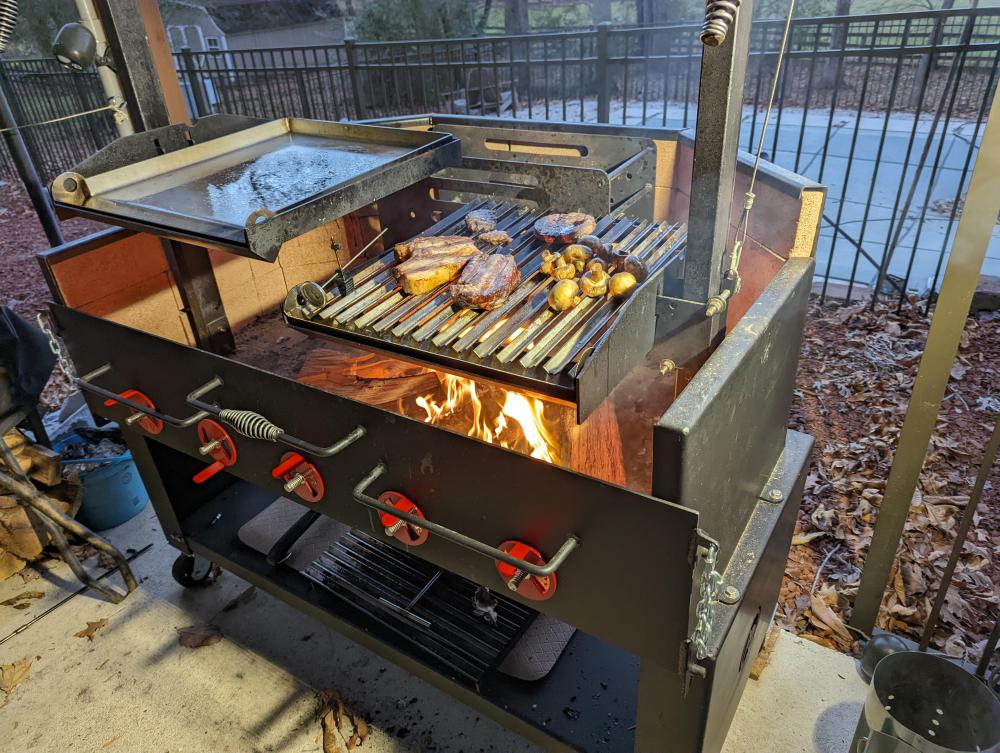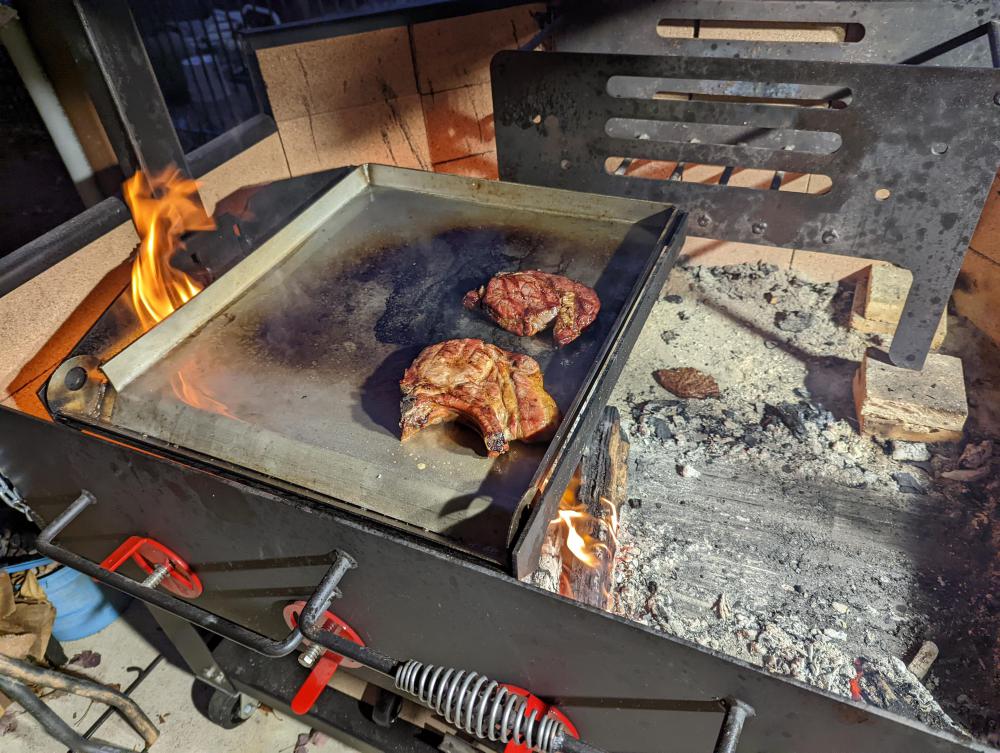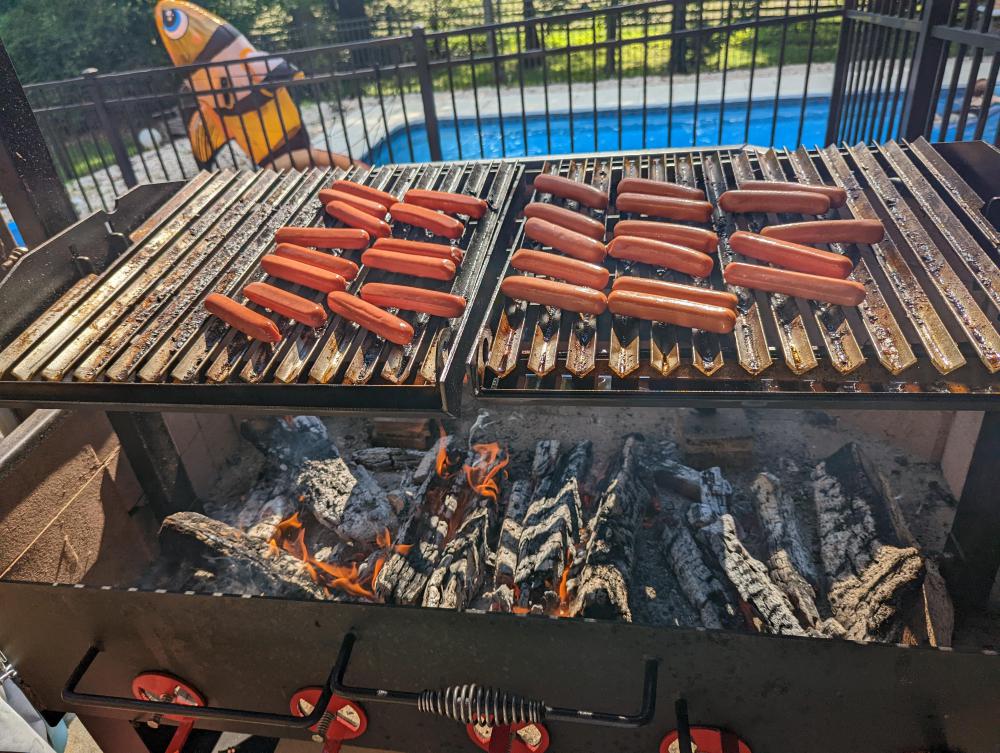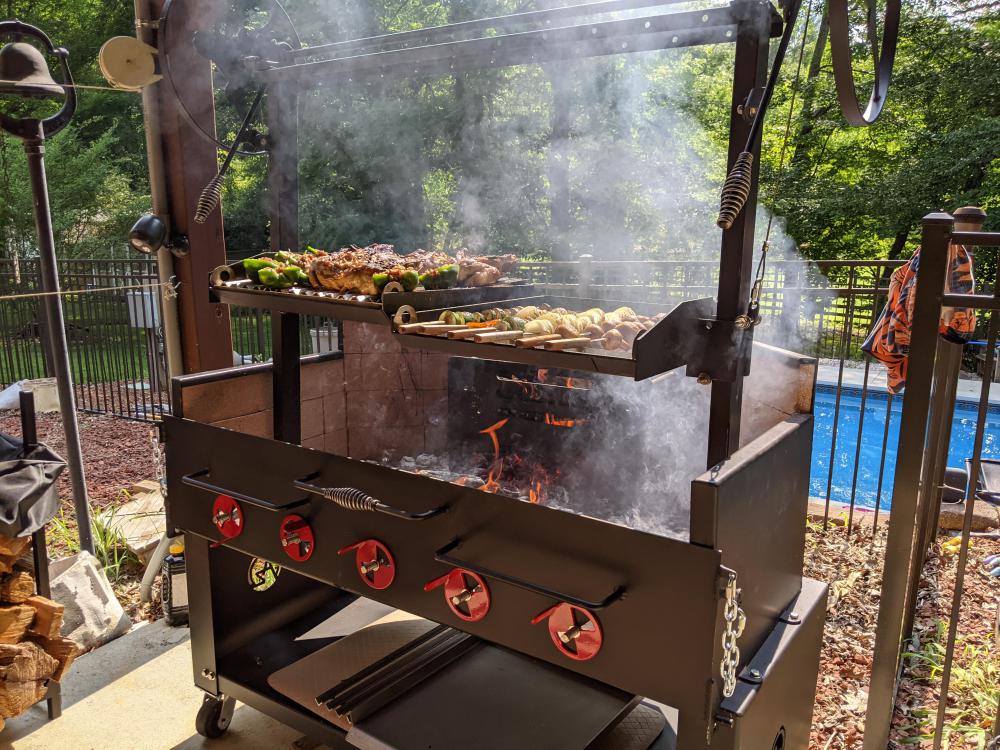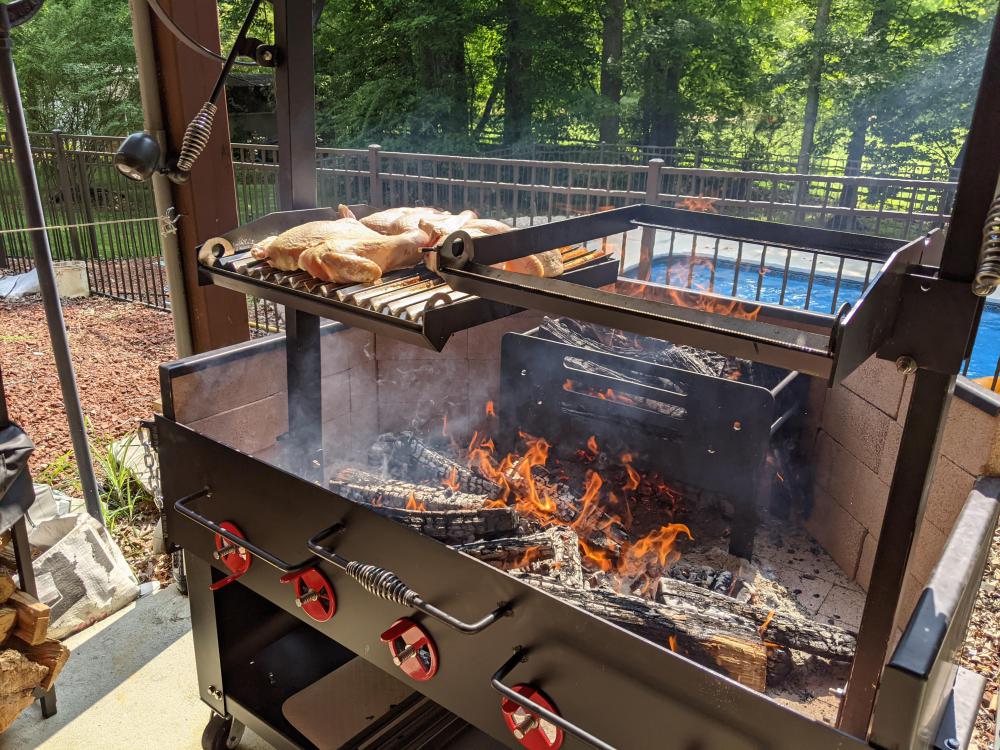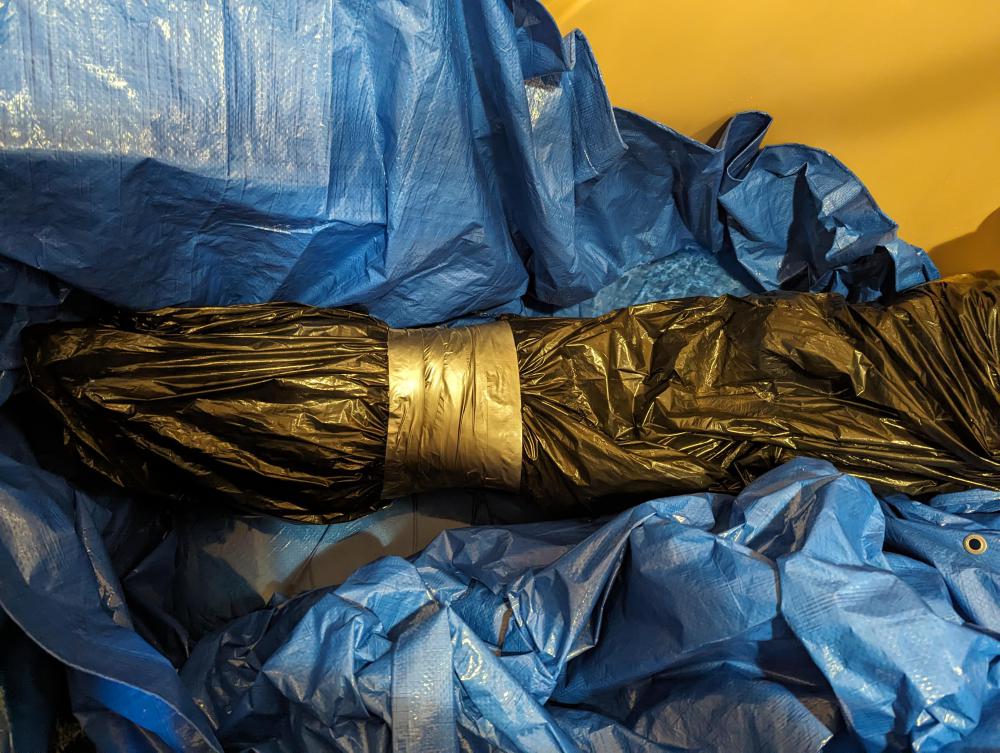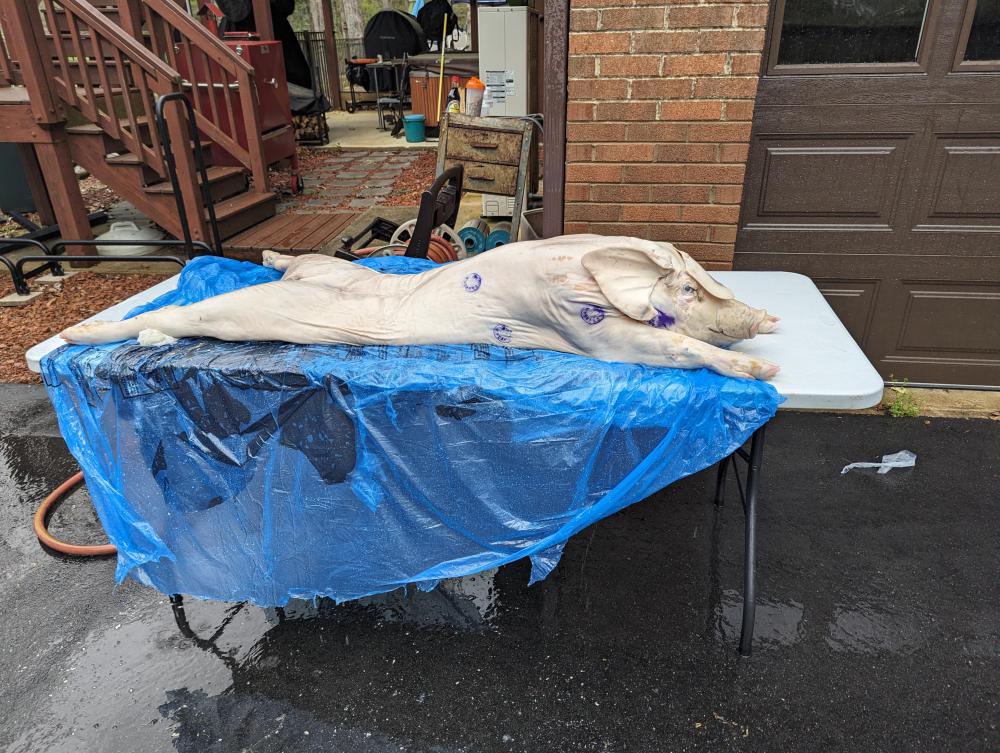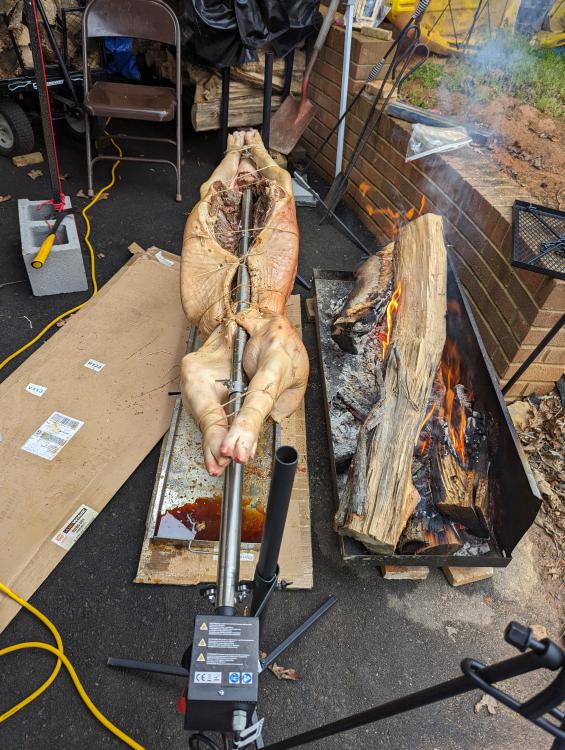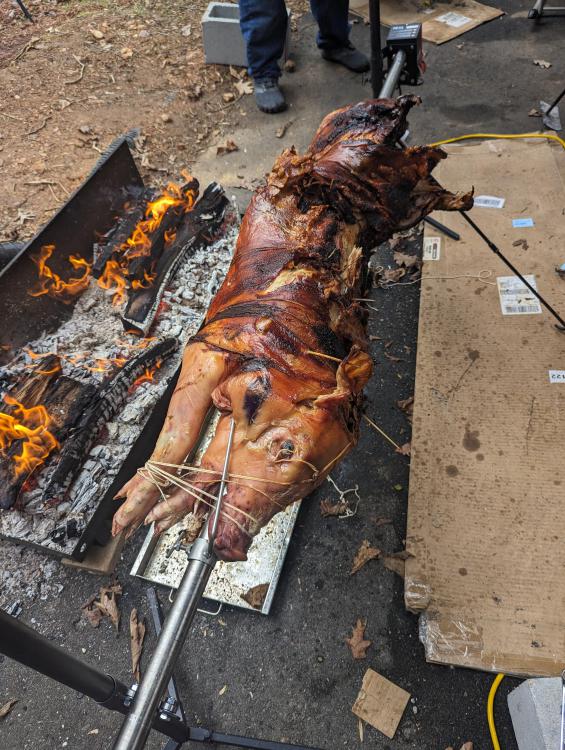
jeffshoaf
Owners-
Posts
445 -
Joined
-
Last visited
-
Days Won
26
Content Type
Profiles
Forums
Events
Everything posted by jeffshoaf
-
I upgrades from a Meater+ to the Meater Block several years ago and have been reasonably happy with it; my only complaints is that the ambient (pit) temperature measurement is generally low and the wooden case, while definitely attractive, isn't really very tough. I knocked the block off a table onto concrete while prepping for a grilling session and cracked the wooden battery cover in half and now have to tape it together and onto the body of the block. The software has some handy features but the predictive stuff is a bit gimmicky. I'll probably switch over to the new Thermoworks version at some point; I'm a bit fan of their products but them probably be a bit of time to get bugs and issues worked out. Their probes don't include an ambient sensor; they say their testing shows the food acts as a heat sink and prevents accurate ambient temperature measurements. Instead, their base units include a wired probe to monitor the ambient temperature; that doesn't really help with open fire rotisserie cooks but I found that the meater ambient and old style dual mechanical thermometers don't really work for that either - get both measure the ambient way too low (I assume due to the time when pointed away from the fire). I'd really like one of these that displays the temperature on the base station as well as in their apps (like Thermoworks Signals wired thermometer) even if i have to set up the alerts, etc. In the app.
-
It's one of the few cooks where a hammer is a required prep tool!
-
IMG_6449.MOV My brother took a few more pics and videos from our cookout, including some of the chickens. @C6Bill, the meat market offered to cut off the head and feet but we initially left then on for presentation (plus I have some kin who like the tongue and there's a surprising amount of meat on the head), but we ended up cutting the feet off - we had the pig's spine secured to the spit before realizing we hadn't accounted for the hind legs when centering it on the spit. PXL_20240810_170033718.TS.mp4 IMG_6449.MOV IMG_6453.MOV
-
-
If y'all will recall, I did a practice run on an open fire rotisseried pig last April. After watching way too much Weather Channel and other weather-related TV to see what Debby was going to do, we had a beautiful but hot day here in North Carolina Saturday for the real run. We applied all the lessons learned from the practice pig and had a very smooth cook with an 89 pound pig, plus some chickens spinning on strings (shoulda done a practice chicken as well since the pig was done right on time but the chickens were a bit late). I got busy and neglected to get pics of the completed pig and chickens, but here are some in-process pics and videos. I couldn't really taste the meat due to some sinus congestion and smoke inhalation, but others said both were very tasty. PXL_20240810_135637245.TS.mp4 PXL_20240810_151439073.TS.mp4 PXL_20240810_170033718.TS.mp4
-
I've had mine for a while but it came with the appropriate adapter. No drilling required; the guru port is strong and deep enough to support the cold smoker. It can rotate but i haven't had it rotate without help from me. After updating to the newer two dial air intake plate, I took the dial off the old single dial intake plate, used high temp duct tape to seal up the extra hole, and mounted the Thermoworks billows fan to the other hole and used my Thermoworks Signals thermometer to monitor and control the cook temperature. I've posted pics of this somewhere on the forum.
-
I need to move a 23 ultimate up stairs - advice?
jeffshoaf replied to BalconySmoken's topic in KK 411
Hopefully, insurance for movers does exist so you'll get some help if they drop and damage your KK! -
Yeah, i looked at the cooker on the Amazon UK site after replying and couldn't figure out how the lid locked for pressure cooking, plus the listed max temperature was lower than recommended for pressure canning. I searched for that brand on the Amazon USA site and couldn't find it. The beans I canned in the instant pot were just dried beans and water - i didn't add any seasoning or oil at all and waited until i unsealed and heated up to eat before seasoning. They were really clear right after canning but clouded up as they cooled. Seeing the pics, I remember that there were 3 jars of pinto beans and one jar of navy (white) beans.
-
I obviously forgot to follow up on this thread! I did get the instant pot that i mentioned above. It does work - I successfully canned homemade beef stock and pinto beans in pint jars and retort canned onions and peaches in retort bags. All sealed well and was stored in my kitchen cabinets; all of the stuff that i canned in jars was consumed while i had limited mobility after foot surgery. I've tried one of the bags of onions; they were vidalia (or something similar) sweet onions and were caramelized more than what i usually am for when cooking but I guess that's to be expected. They were successfully preserved. I honestly forgot about the peaches and the remaining onions until @tekobo revived this thread... I need to try some of the peaches for ice cream in the Creami! If y'all recall, one of my goals for canning was growing and canning tomatoes since I used a lot of store-bought canned tomatoes for sauces, soups, pizza, etc. I stumbled on a raised garden bed on clearance last fall and intended to get at least tomatoes and peppers started in the spring but that all fell thru - my sister totaled her car and borrowed my pickup truck until she got the insurance settlement and replaced her car, and then my mother moved into an independent living residence and that ate up a lot of time. So no readily available produce to try. And i haven't tried to buy enough to try canning due to getting her house ready to sell. Anyway, the instant pot model that reaches canning pressures does work and it's easy to use, but the size is a big limitation - it'll comfortably fit 4 pint jars at a time or six 8 oz retort bags (maybe more retort bags if you arrange them carefully). Those are pretty small batches even with the faster pressurization this model instant pot features, so fine for occasional use with small batches but really not suitable for much volume. It is a really nice pressure cooker though, and has relegated my OG instant pot to backup and pot luck duty. I'll be checking on availability in the USA for the canner @tekobo linked and wait on her review!
-
Fired up one side of the big grill for a big ribeye that was dry aged for 50 days, shrimp, and a foil packet of diced taters for today's supper, plus a couple of pork chops for later in the week, all grilled over hickory and a bit of oak. Steak was nice and tender and supper was very tasty!
-
If you want to use the drippings from you cook, the double-bottom pan is a good investment.
-
In addition to the multi-zone cooking Tony mentioned, all that room is very nice. The pancake cook in the pics is the first time I've made pancakes and they were all still warm when I ate them. Clean up is easier too! I do have to admit that I waffled about getting one for years due to that very valid point, but I really like pancakes and have always struggled with them - I always burned the first one and I struggled with keeping the first ones warm while the latter ones cooked. I tried several large frying pans as well as a griddle plate for my gas grill. The pans didn't really help with the "keep warm" issue and the grill griddle plate was a pain for grease management. I've always struggled with not playing with my food while it's cooking and having several things going on the griddle at the same let's me play with one thing that needs constant attention while leaving stuff that needs to be undisturbed while cooking alone. (I think that's also a reason I like cooking on the big Santa Maria grill - I can play with the fire instead of the food). I'm having a blast cooking on this thing!
-
So I gotta griddle - a Halo 4b converted to natural gas using their conversion kit. This is a really different type of cooking for me and I'm enjoying it a lot. Still learning and doing small cooks - it's good training in case I need to get a job at the Waffle House.
-
-
@Tyrus You're welcome to borrow mine sometime, but it's over 800 lbs with the fire brick installed and is a pain to move unless it's on some sort of pavement! When I ordered it, I intended to cook with charcoal mostly and wood occasionally but that hasn't happened - I've used a chimney of charcoal to get a jump start on getting the wood started a few times but the vast majority of cooks have been totally with wood. The chicken in the pics with the stuffed peppers and skewered veggies was done over oak and was the best chicken I've ever had. Lots of excellent steaks and pork chops as well. I did hamburgers and hot dogs for a big family cookout a few years ago and had numerous attendees ask what hamburger I used and I was honest with them (frozen members mark burgers from Sam's Club, with Worcester sauce, salt, and pepper), but they thought I was holding out on them - the "secret" was grilling them over oak wood.
-
I have a fitted cover that I keep on the grill when not in use; I try to get the ash out the day after a cook and then put the cover on unless I'm planning another cook within the next few days and there's no rain in the forecast. The cover goes all the way to the ground and there are separate covers for the wheels that raise and lower the grates; it keeps both the rain and the critters out. The grill is under my screened-in and roofed deck; there's plenty of clearance - I considered mounting some kind of metal fire/heat shield over the grill but it hasn't been needed (plus I was afraid birds would nest between the shield and the floor of the deck). As you can see, I've built some pretty big fires but the flames have come nowhere near the floor of the deck. The back of the grill extends out from the base in the back where the brassaro is and that part is out from under the deck so even if the wood in the brassaro becomes fully engulfed, the flames won't be directly under the deck. I've not had that happen since that wood burns from the bottom up and the high back and sides help to keep the wind from fanning the flames. To be honest, I've not done much cooking in my 23" KK in the last few years - with the charcoal basket so far down inside, it kills my back to bend over to clean the KK out and work with the charcoal. I've not been able to talk my cats into doing that for me... Cleaning out and building a fire in the Santa Maria/Argentinian grill is much easier on my back since it has the fold-down front panel. I've been doing my low and slow cooks in an insulated gravity feed smoker and I recently got a reverse-flow stick burner. I've worked out ways of moving and handling my wood splits without putting much strain on my back but I've not been able to work out a way of using the KK without having to reach down inside it.
-
The brassero is good for long/big cooks, especially if (like me) you're not good at estimating how much wood you'll need. I like my grill design over Santa Maria store grills since the high back and sides help block the wind while the fold-down front makes it easier to play with the fire and is handy for cleaning ash out. I'm not sure how much heat retention is helped by the fire brick since I've not cooked without them, but the grill definitely holds heat well. The tilted Argentinian-style grates are nice but do make grilling hot dogs more difficult! This is still my favorite way to cook.
-
I'm hoping to rotisserie roast a whole hog for a family gathering this summer, but since I'd never done one I decided to do a practice pig. I ordered a 70 to 80 lb one from a local meat shop last week with the plan to pick it up Wednesday afternoon, dry brine it overnight, and have it roasting by 10 am yesterday (Thursday). My brother and I went to pick it up and things went a bit awry: not only was the pig 93 lbs - it was also frozen solid. Evidently, the supplier didn't have any pigs ready to slaughter in the sight range I'd requested, so they sent the closest thing they had. The front legs were frozen straight out by the head and the hind legs were straight out from the back of the pig so it didn't fit in any of the coolers we had available so we loaded it in the back of my pickup truck and carried it home. It was wrapped up tight in plastic; when we got it home, we suck it in a couple of industrial garbage bags (one over the front end and the other over the back end tapped the open ends of the bags together with duct tape, and lugged it upstairs and dumped it in the bathtub on top of a tarp, then filled the tub with cold water. My brother got to my house before 8 am Thursday morning and the pig was thawed so we lugged it back downstairs and opened up the plastic to discover that the pig has been butterflied - very good if you're wanting to smoke it in a smoker or open pit, but not for spit roasting. The spine had even been split open on the inside so it would lay nice and flat. We cleaned it up and washed it, then seasoned the inside and got it on the spit the best we could, tying it on with heavy twine. Neither of us is good with knots so we tied a lot. Got the motor mounted on the spit and the spit on the tripods. It was very damp here so I started two chimneys of lump charcoal to establish a good bed of coals while my brother applied soy sauce to the pig's skin. When the charcoal was burning good, I dumped it in the fire pit, added hickory, and we started up the rotisserie at around 9:15 am (about the same time a couple of cousins showed up to help). Most of the pig was done by 4:45 pm or so, so we stopped the rotisserie and focused on getting heat on the areas that weren't quite to temperature. We took it away from the fire about 5:15 pm and let the pig rest while I hunted for a 10 mm wrench to remove the spine clamp; the wrench had evidently wandered off on is own adventure after I'd used it that morning. Due to the pig being butterflied, it flopped around a lot and because of that and shrinkage, we had to stop and add additional twine to secure the pig to the spit. Also, with the legs tied up stretched out in front and behind the pig, the pig was wider than the firepit so the legs didn't cook very well. We also burned a few patches of skin. I had invited friends and family to come by and get pork to go; the general consensus was that it was very tasty except for the burnt patches of skin and the undercooked legs. I fire up the big grill to finish up the legs after most everyone has left. So, the verdict: I think things went pretty well considering it was my first attempt; I certainly learned a lot. A lot of the issues we encountered were due to the pig being frozen and butterflied; I have some ideas for handling those issues if they reoccur. I think we can handle the undercooked legs by bringing the hind legs up under the pig to shorten up the total length instead of leaving them stretched out behind. Oh - we also had a major grease fire when the oil in the propane deep fryer my brother was using to fry french fries at lunch caught fire, but that's another story. We also had a few rain events and some pretty strong wind gusts, plus a tornado warning after the cook was done. PXL_20240411_150948483.TS.mp4 PXL_20240411_172236138.TS.mp4 PXL_20240411_183900220.TS.mp4
-
I'm waffling back and forth about getting a flattop griddle to add to my arsenal of cookers. I have a griddle plate for my grass grill and another for my big Santa Maria/Argentinian grill but really use them since I have to remove a cooking grate to install the plate, plus the great management isn't great on either. So, anyone here a griddler? Whatcha got and pros/cons? If I get one, I'll want to convert it from propane to natural gas and not all of the manufacturers order a conversion kit, so that'll be a factor in which ones I'll consider. Thanks!
-
I forgot to mention that if you go with the billows, be sure to get the optional damper - the billows moves so much air that it'll overshot your target temperature. The damper is under $5 and resolves the issue.
-
If you Google Bbq Guru, you'll most likely see that their wifi controllers have been very problematic for the last several years but few complaints about their fans. I have one of their CyberQ controllers and the 25 cfm fan; I gave up on the controller - it was always aggravating to use, but a few firmware updates made it pretty much useless and it sometimes took weeks for them to provide any fixes - but I had no issues with the fan. The fan wiring didn't have any strain relief and that worried me, so I used some electrical tape to tape the wiring to the fan housing to provide some protection from accidentally yanking the wiring out of the fan. I switched over to a Thermoworks Signals and Billows fan and have been much happier with that setup.
-
Look no further for your Christmas present wish list!
jeffshoaf replied to tekobo's topic in Jokes, Ribbin' & Misc Banter!
I've not had problems with ice crystals in the mix, but the machine does leave a thin layer of unprocessed frozen stuff on the sides of the container with some recipes; if you scrape some of that off when scooping. I've also had a few times when I used real sugar and didn't get it dissolved well before freezing - the frozen sugar crystals didn't get ground up during processing and could be mistaken for ice crystals. Full fat/full sugar recipes generally don't require a re-spin, especially if you do a mix-in. Adding a bit a liquid before a re-spin tends to cut down on the additional re-spins. I processed a container of Torani coconut syrup and half-and-half with 1/8 teaspoon of guar gum last week: past attempts with this recipe required several re-spins even with a splash of half-and-half, but based on a tip I saw on a Facebook Creami group, I ran a mix-in process instead of a re-spin without actually adding anything as a mix-in and it came out great. I think freezer temperature has an affect on need for the re-spins as well; typically, the recipes that I've done that required a lot of re-spins were powdery and dry looking after the initial spin. I think the re-spin melts the mixture a bit and that adding a bit of liquid has a similar effect. -
@MsTwiggy I've posted several pics in the Non-KK Cooks thread - here are a few:



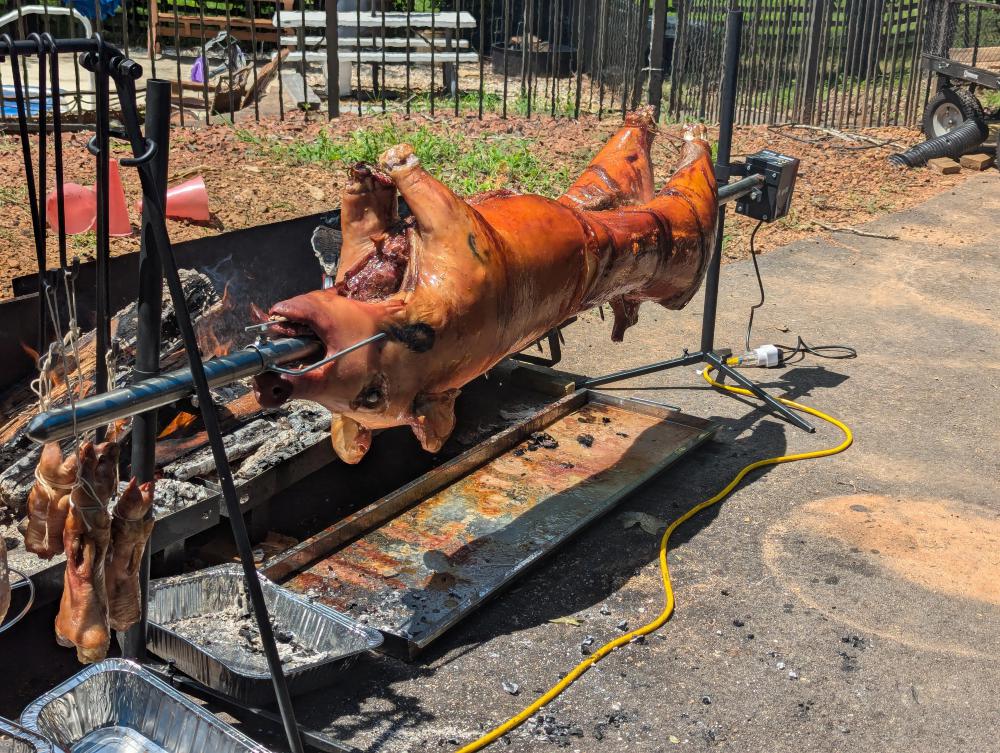
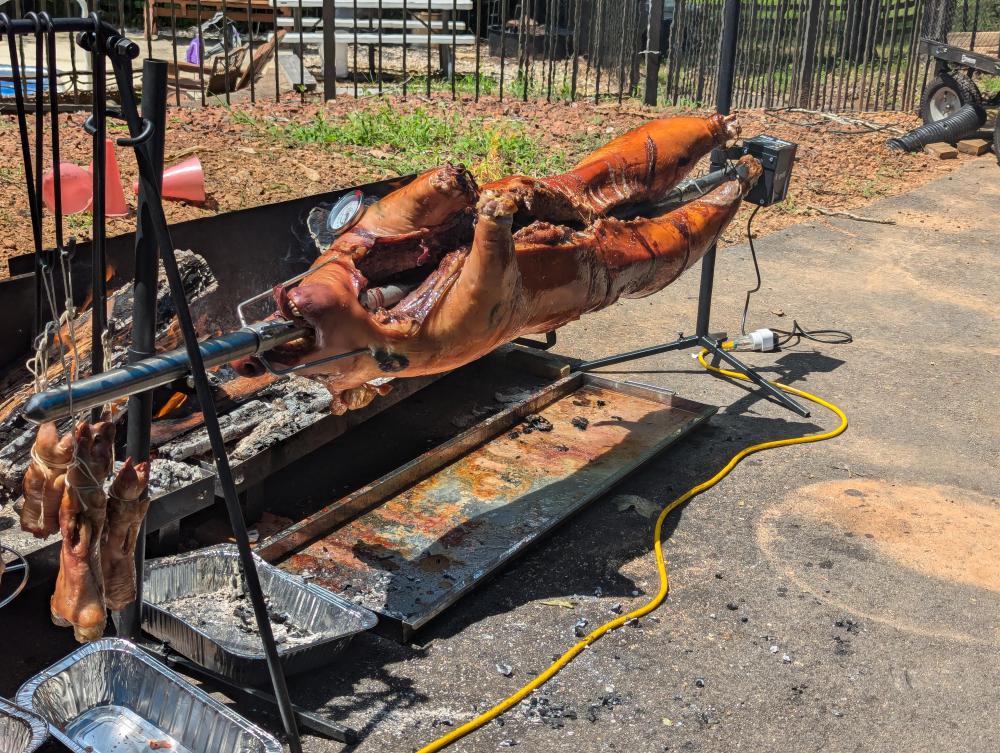

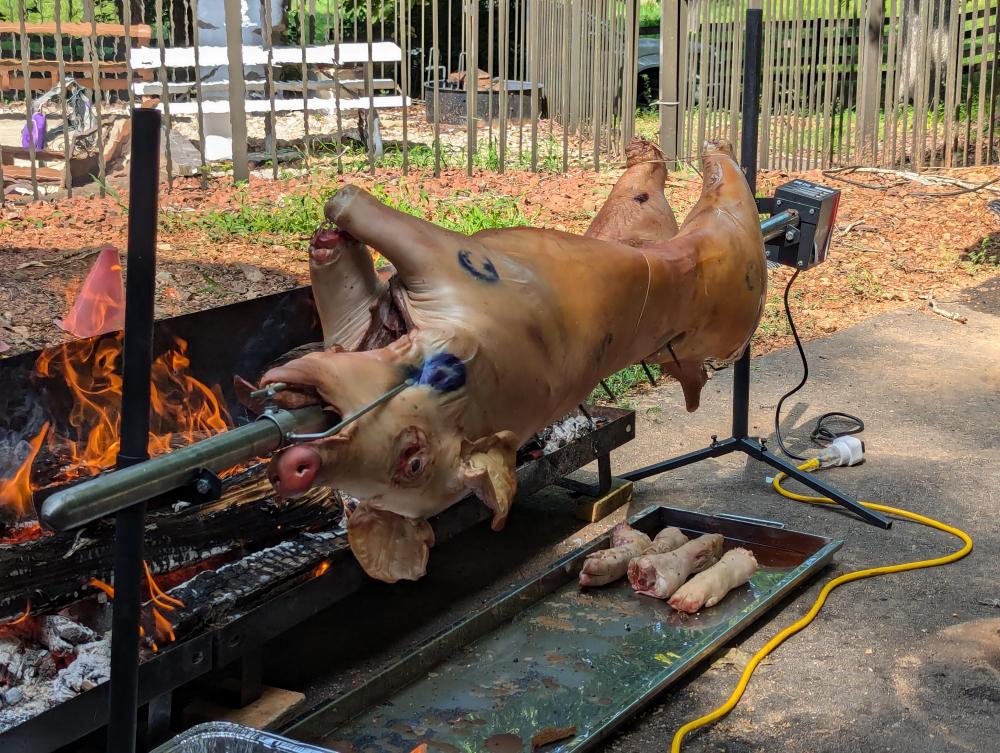


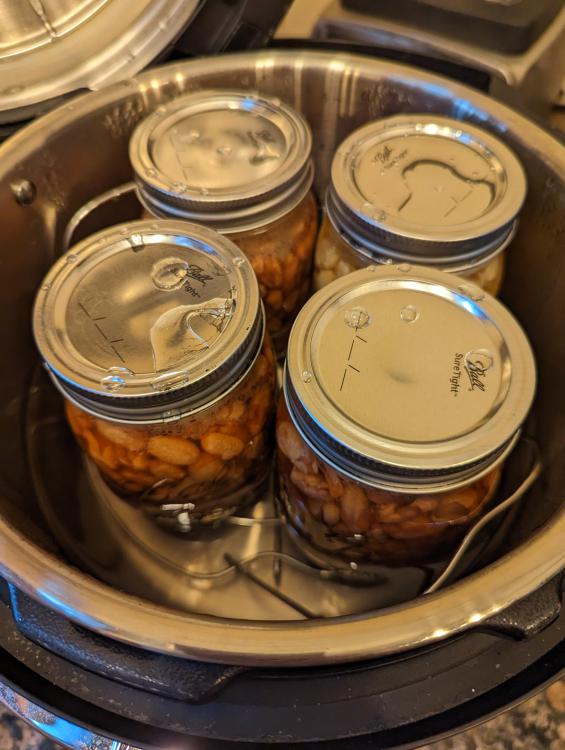
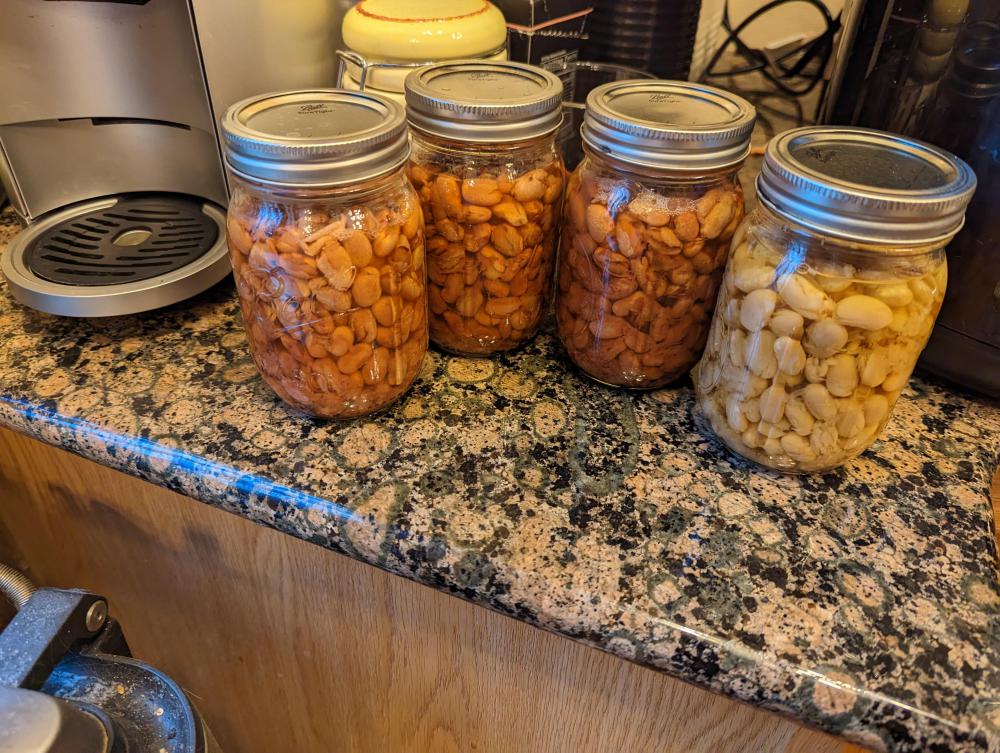
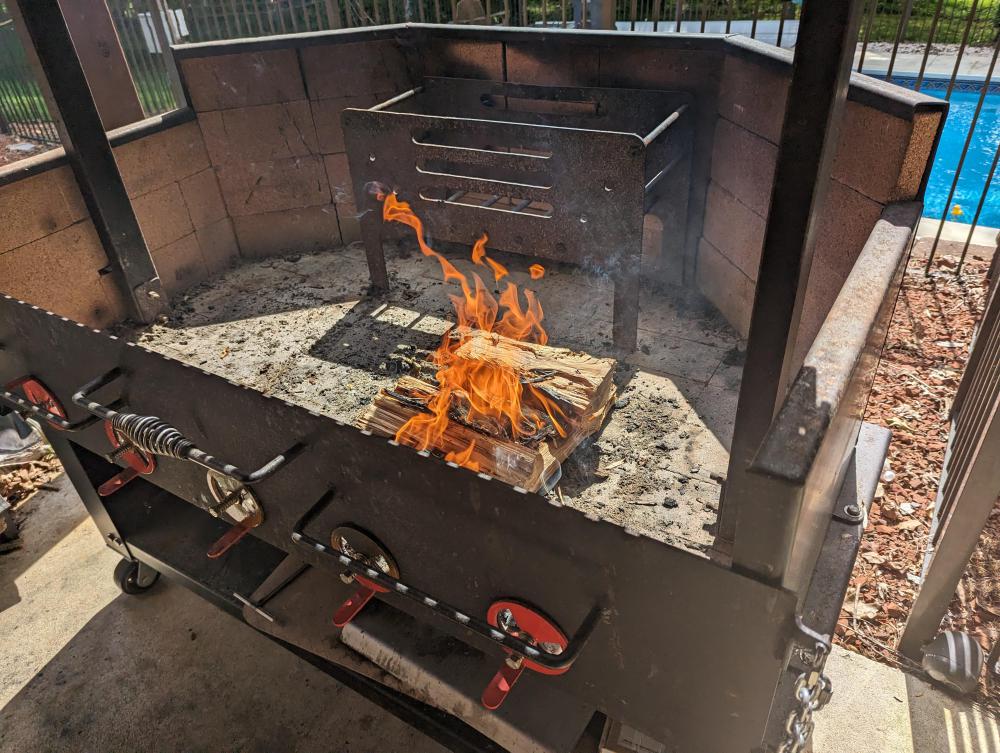

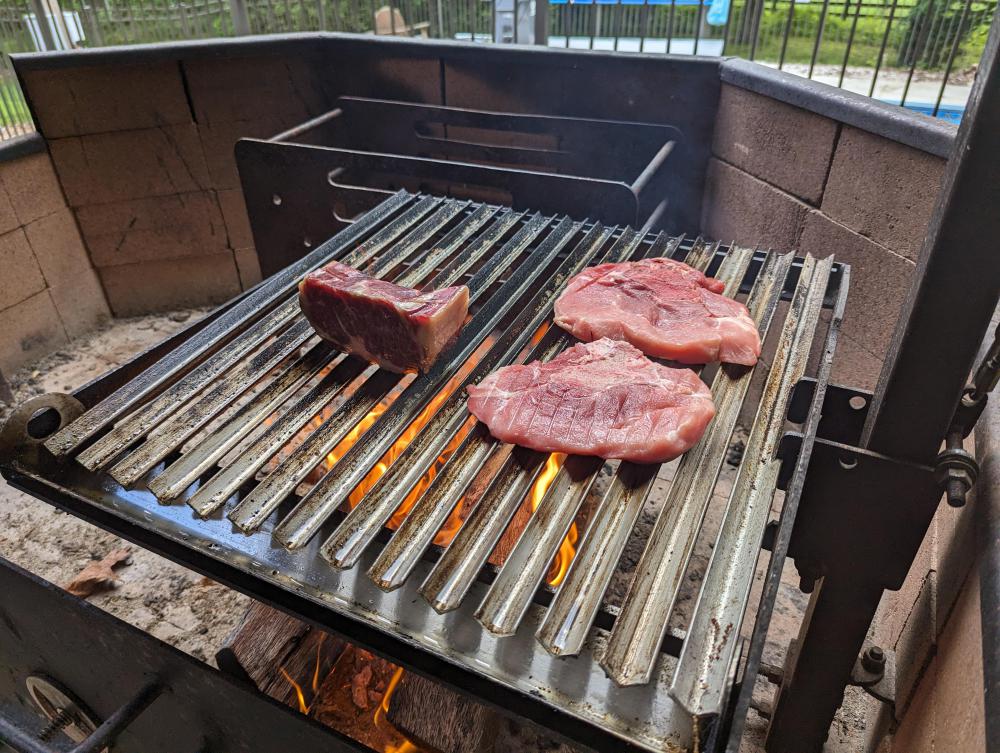
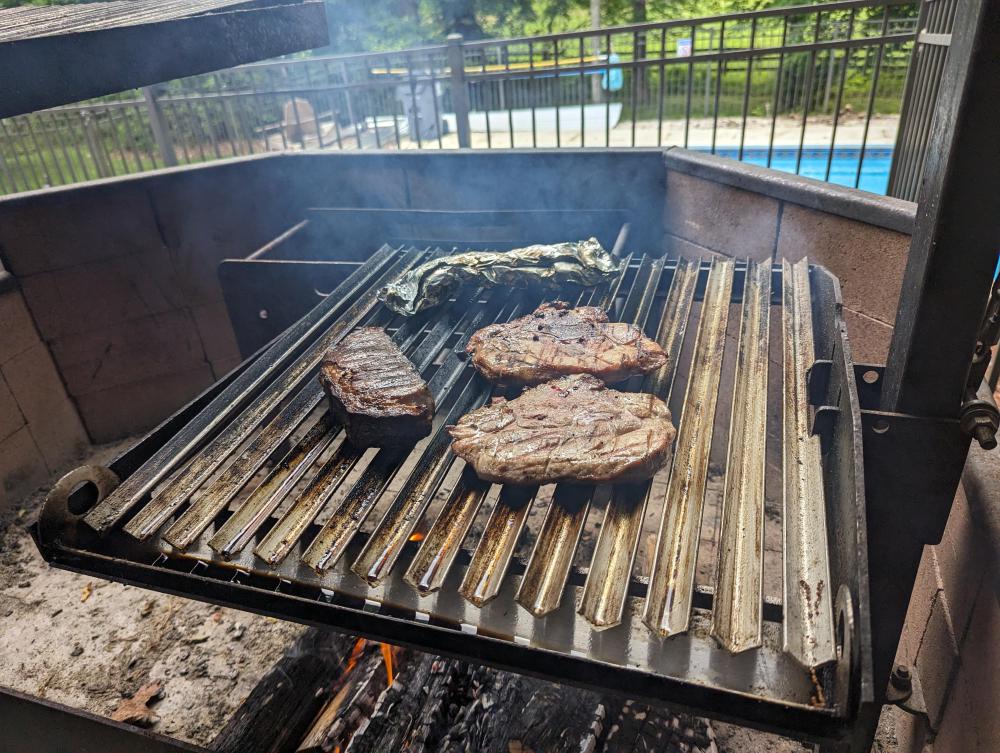
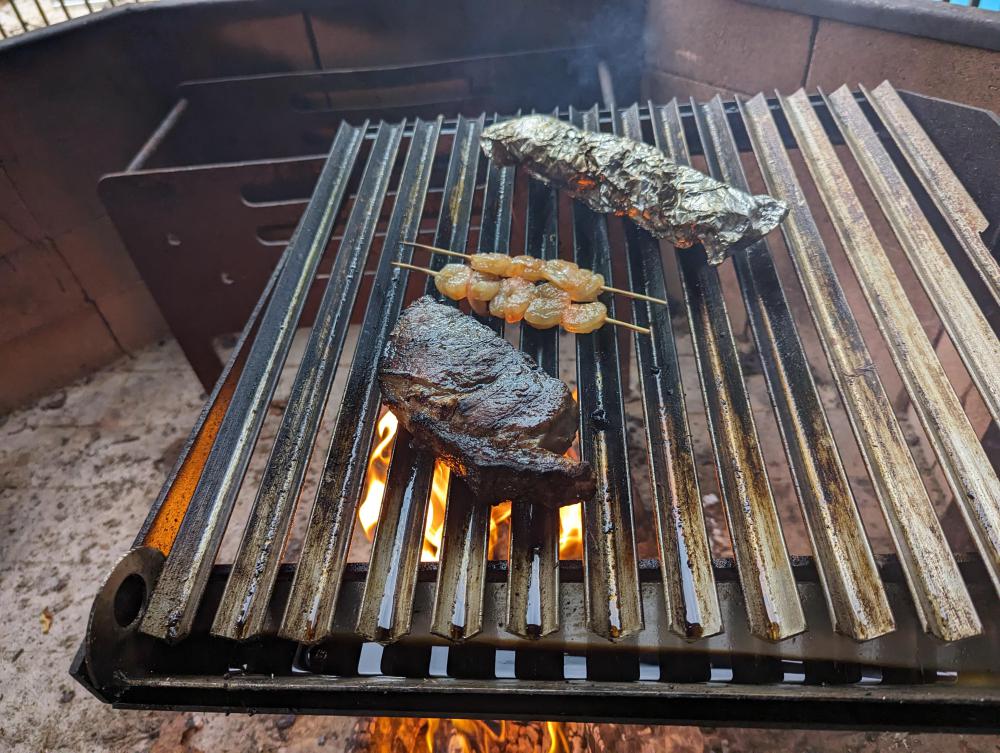
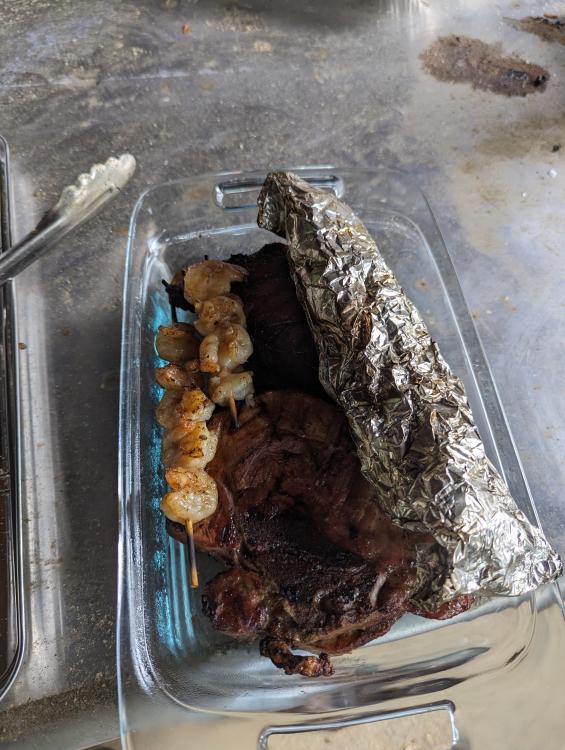
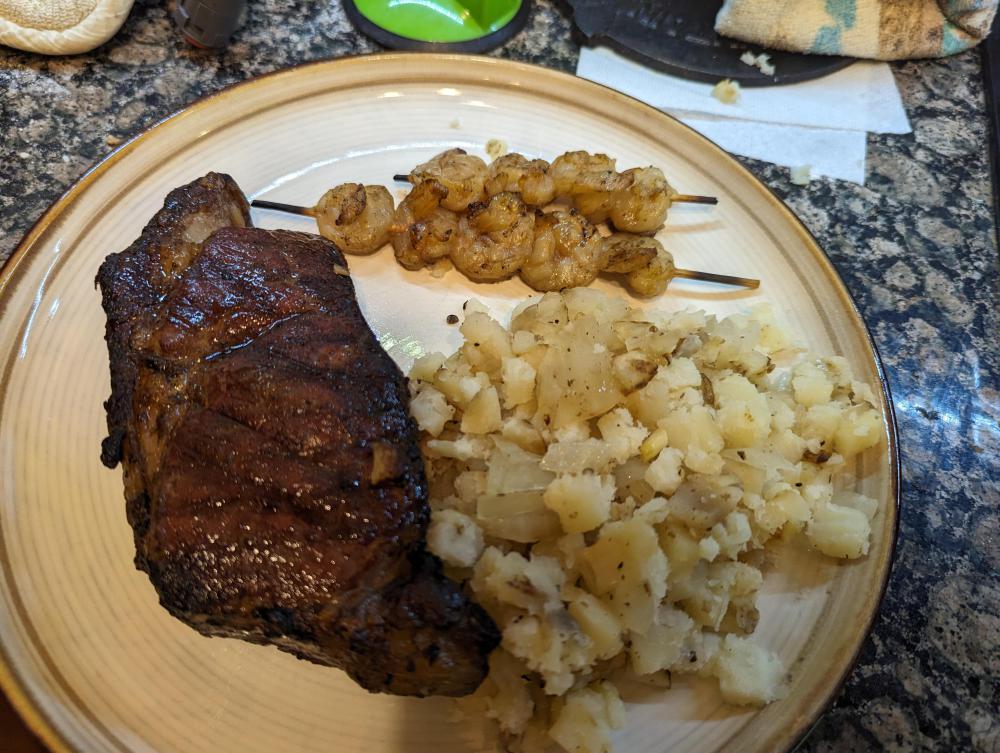
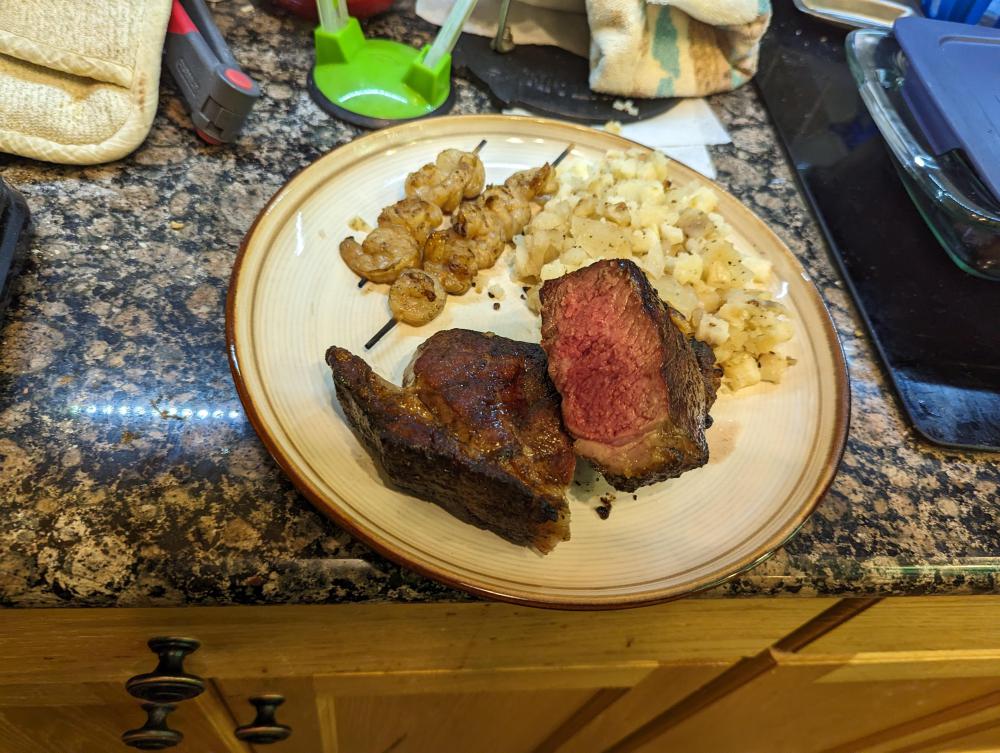
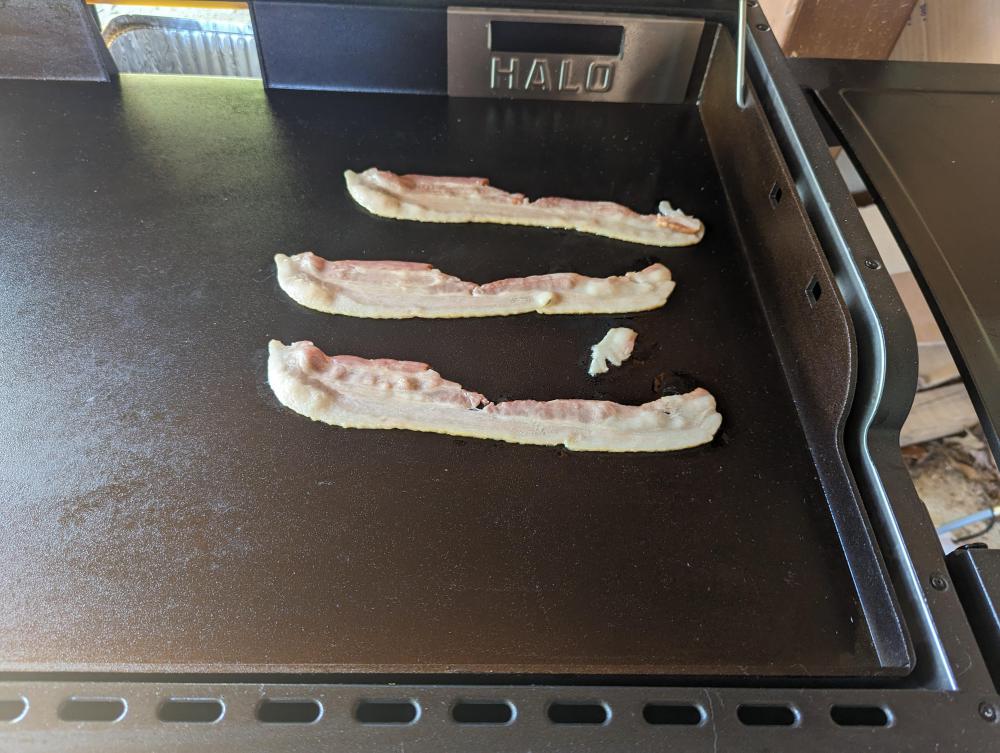
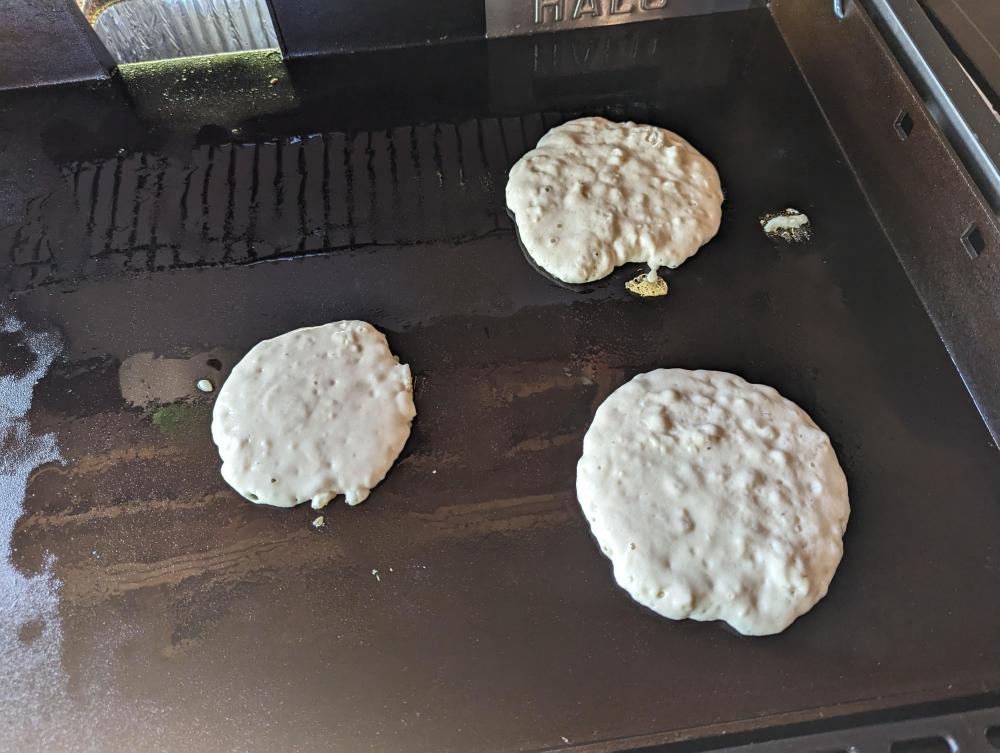
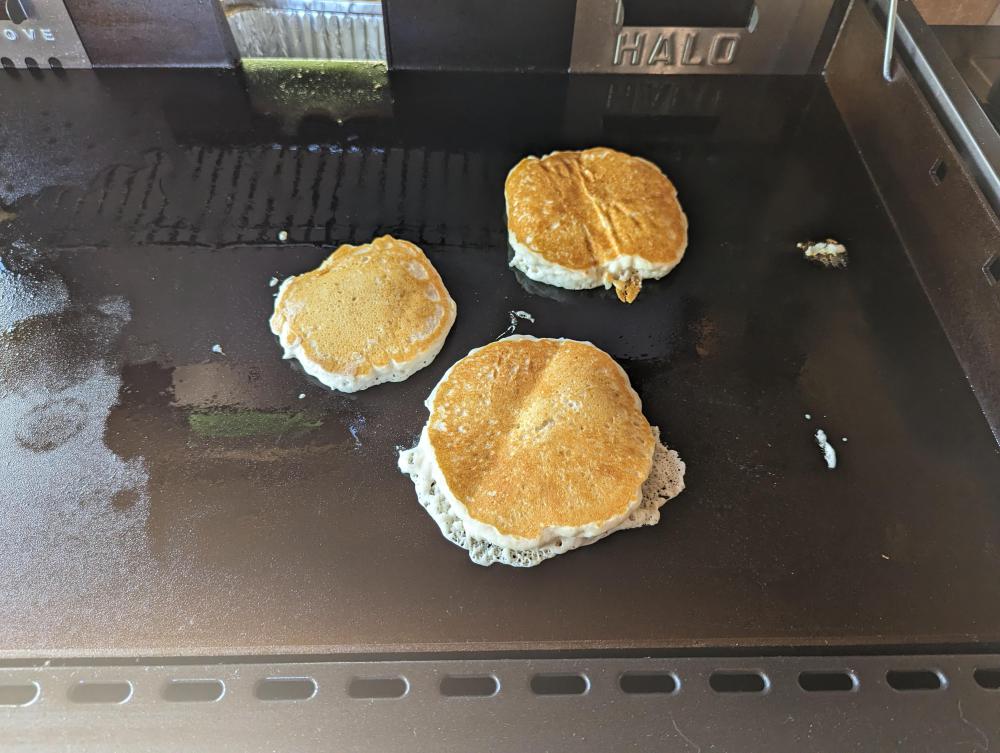
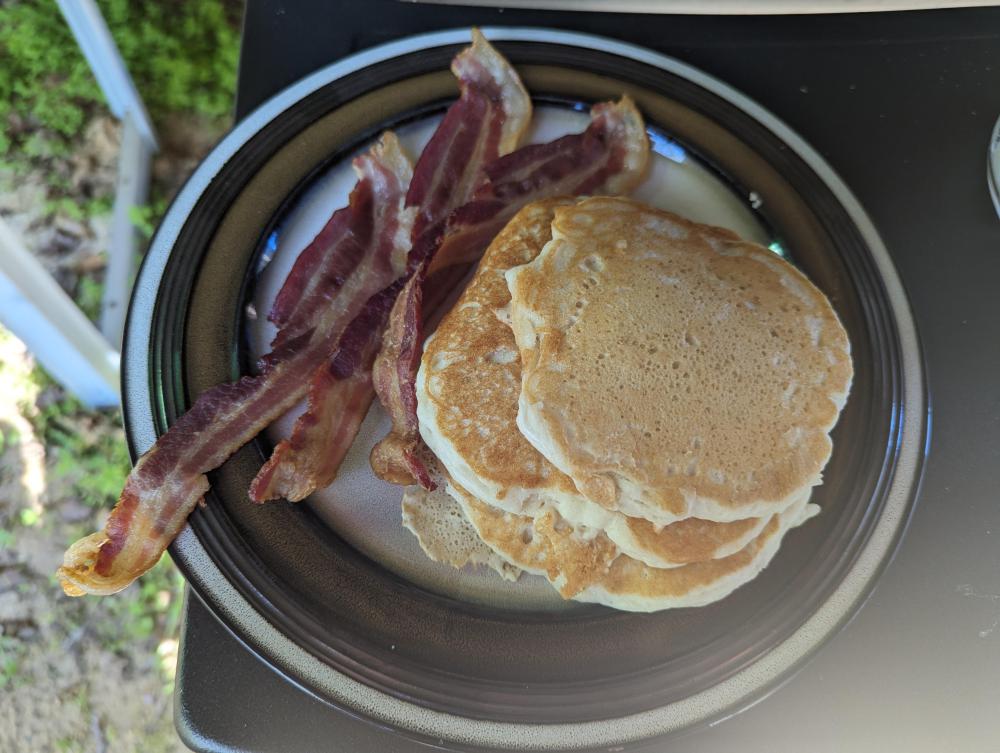

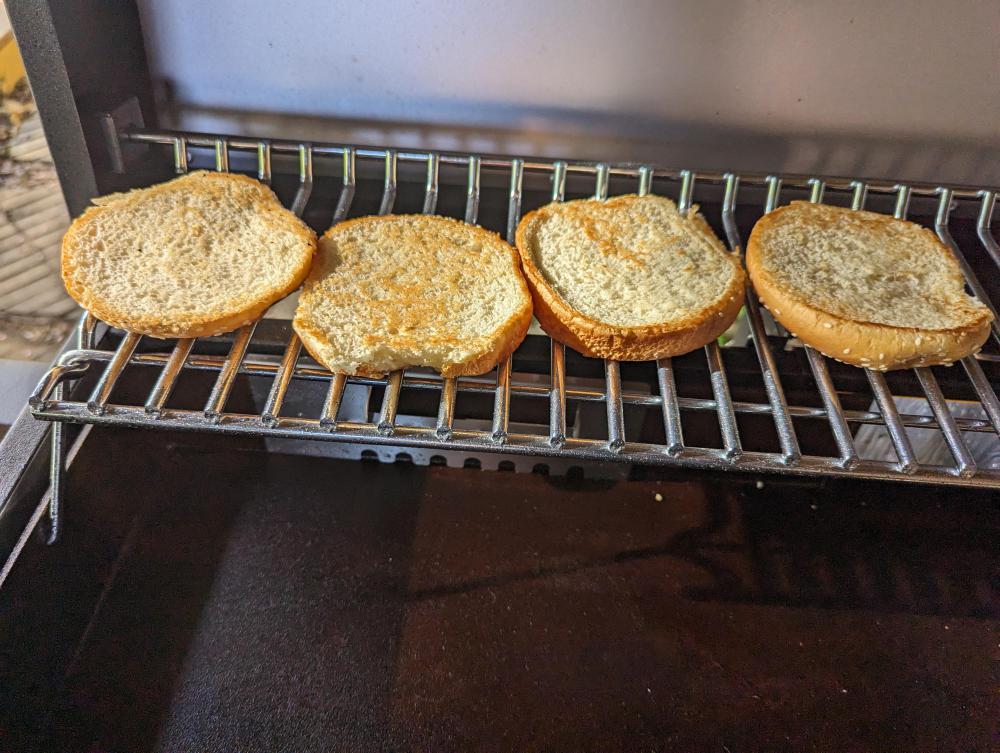
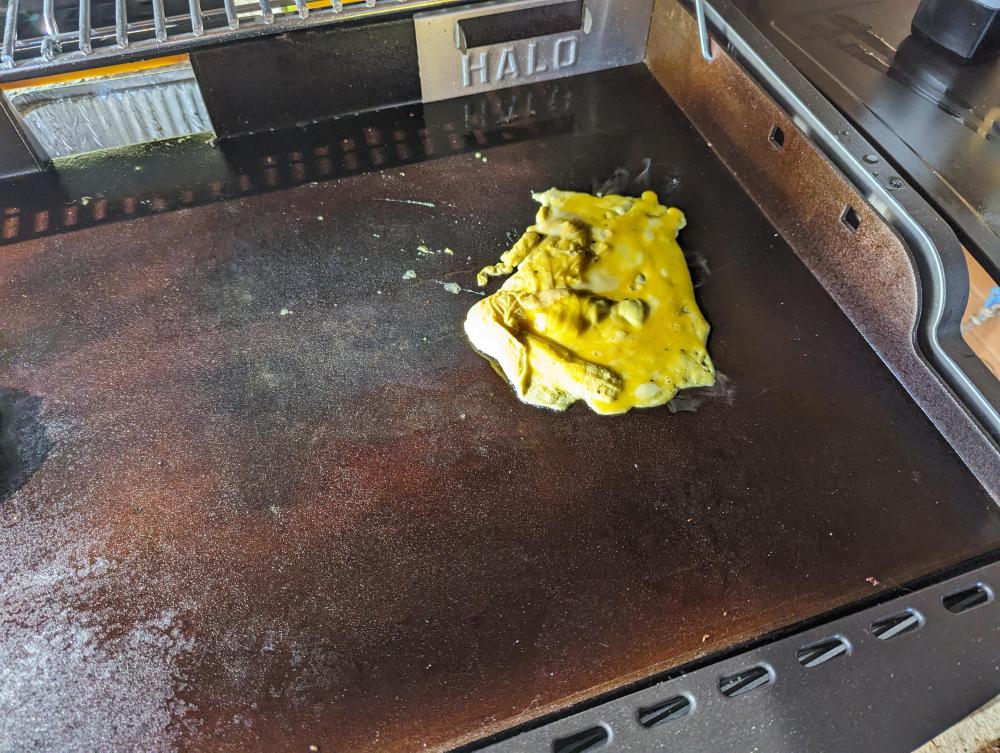
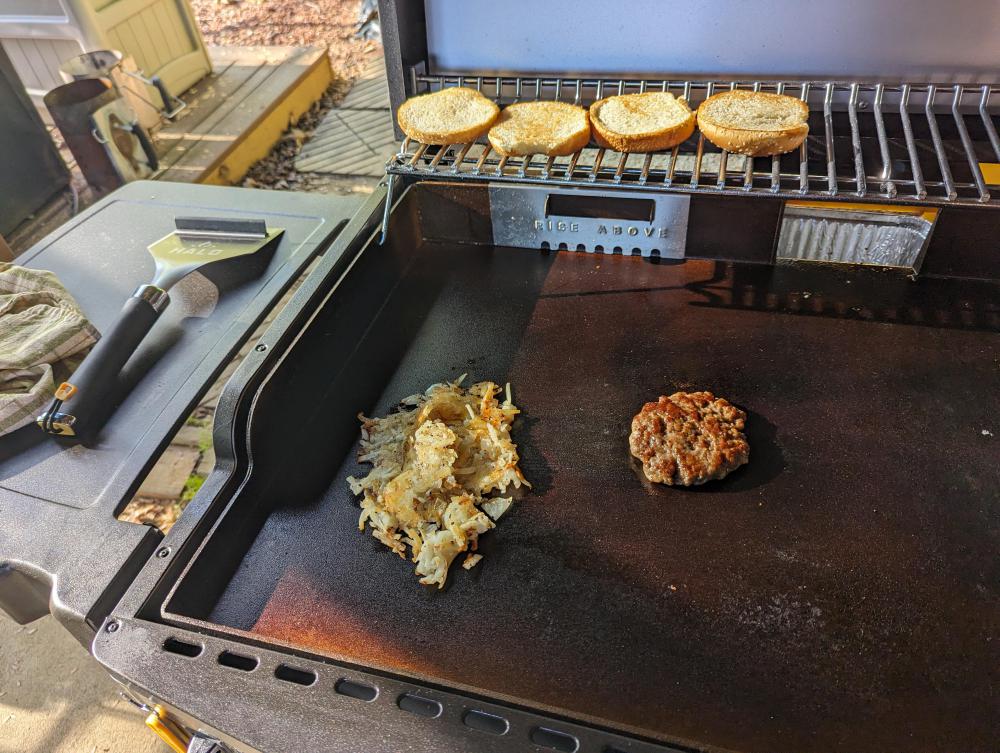
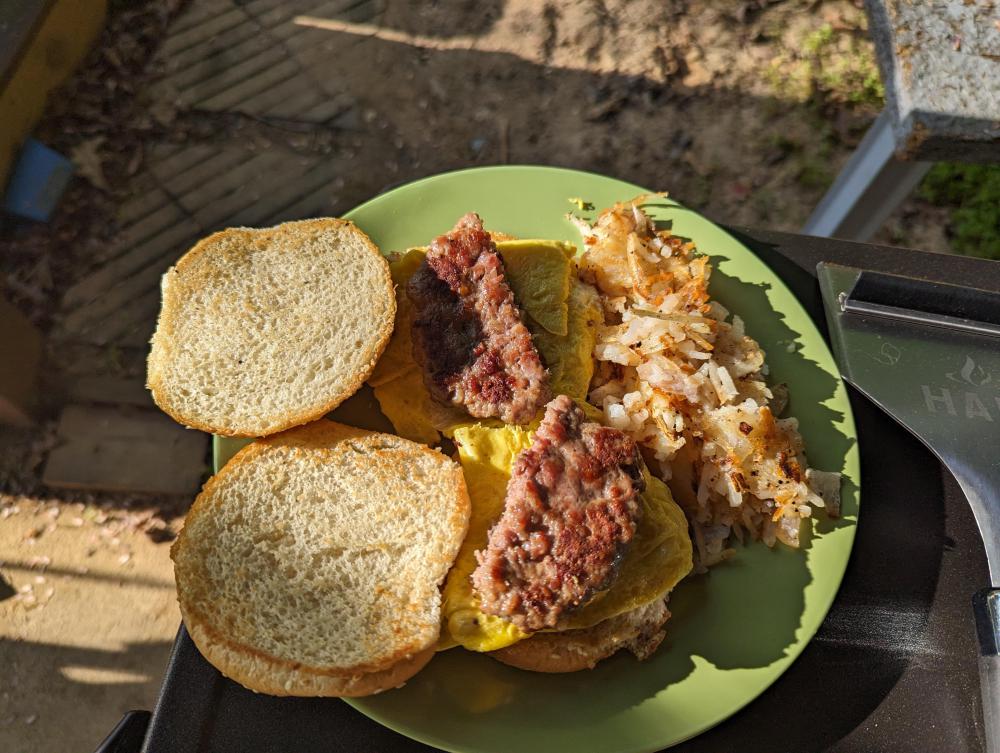
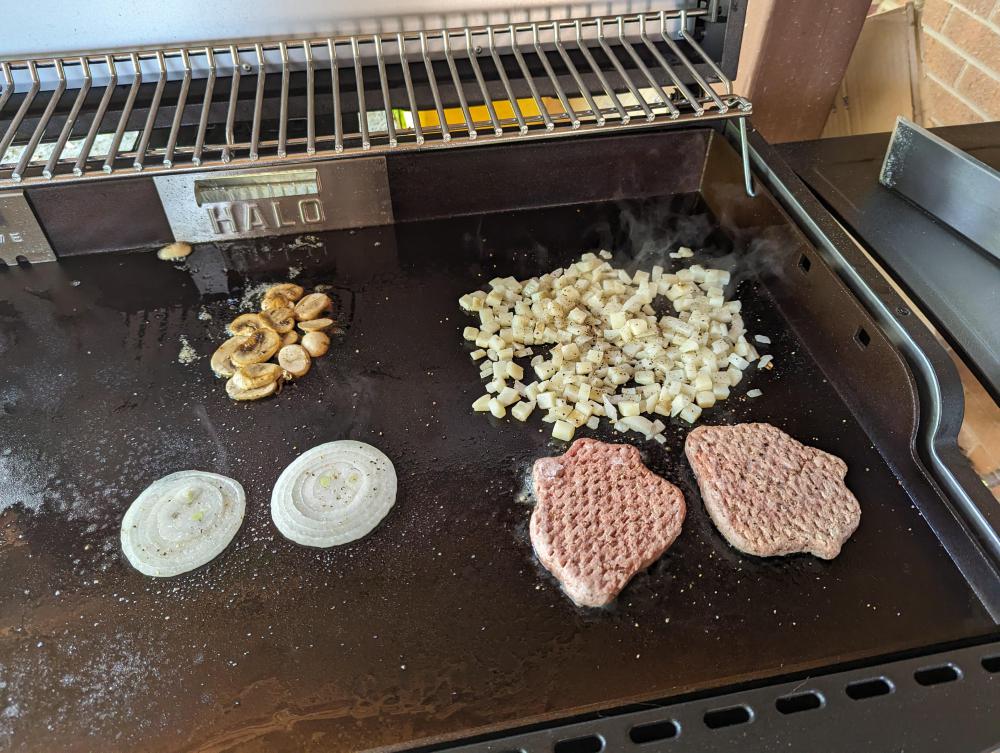

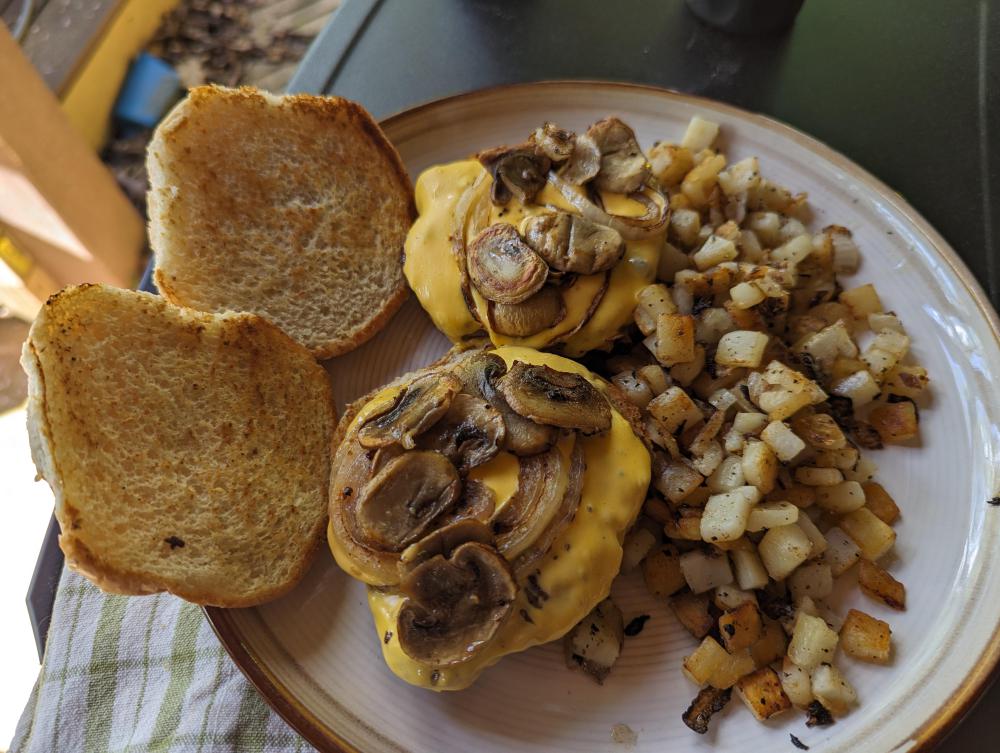
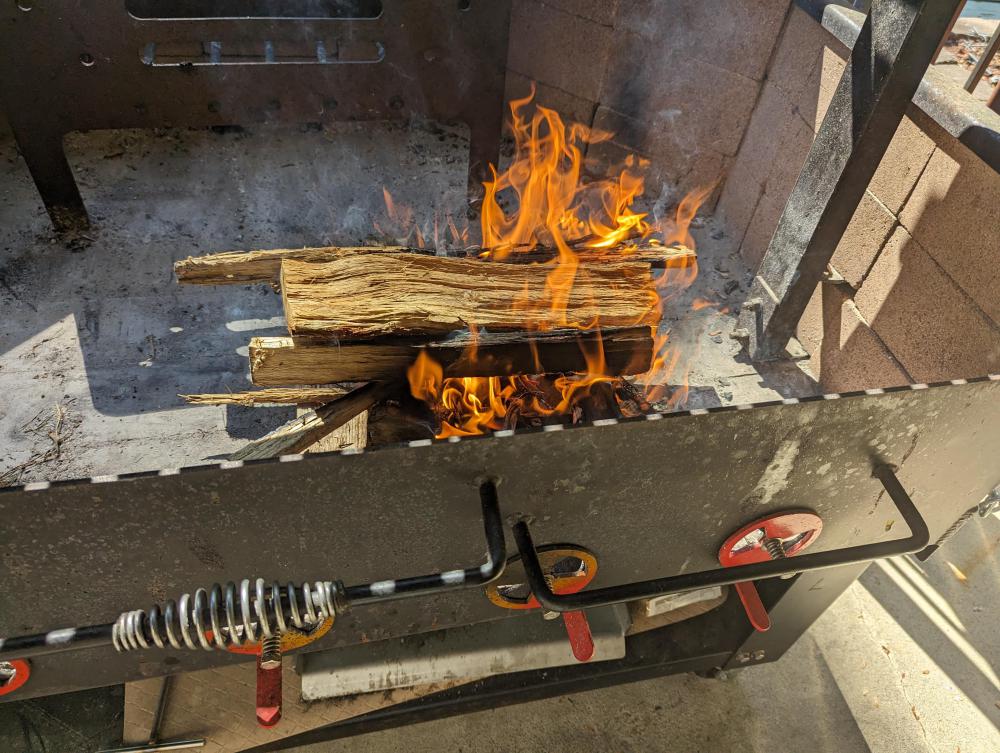
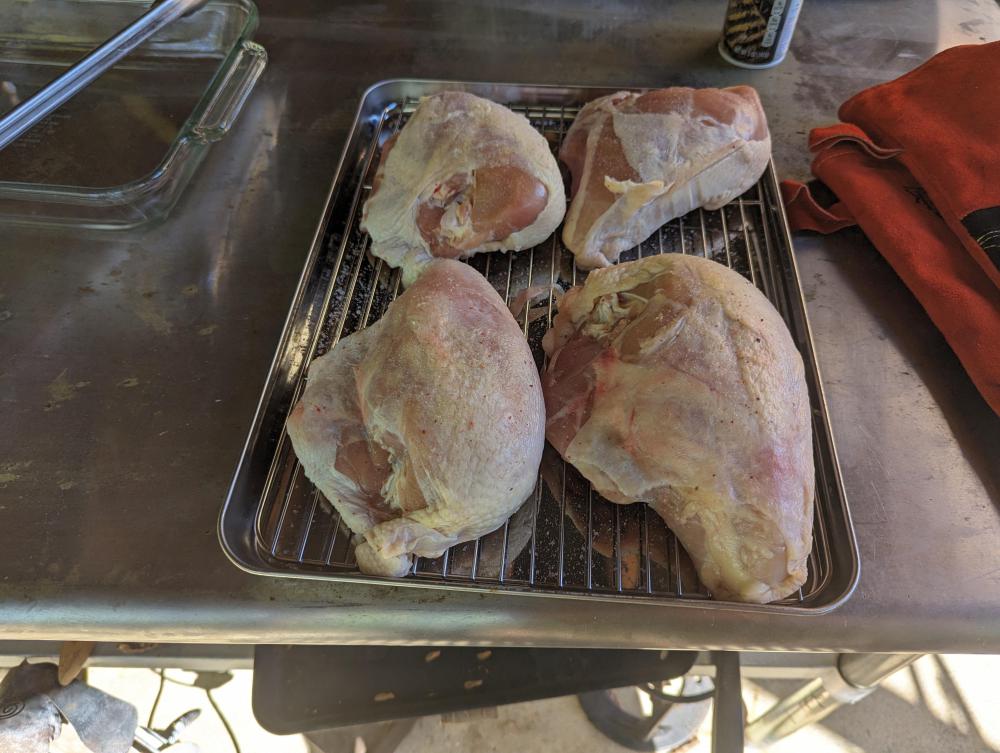
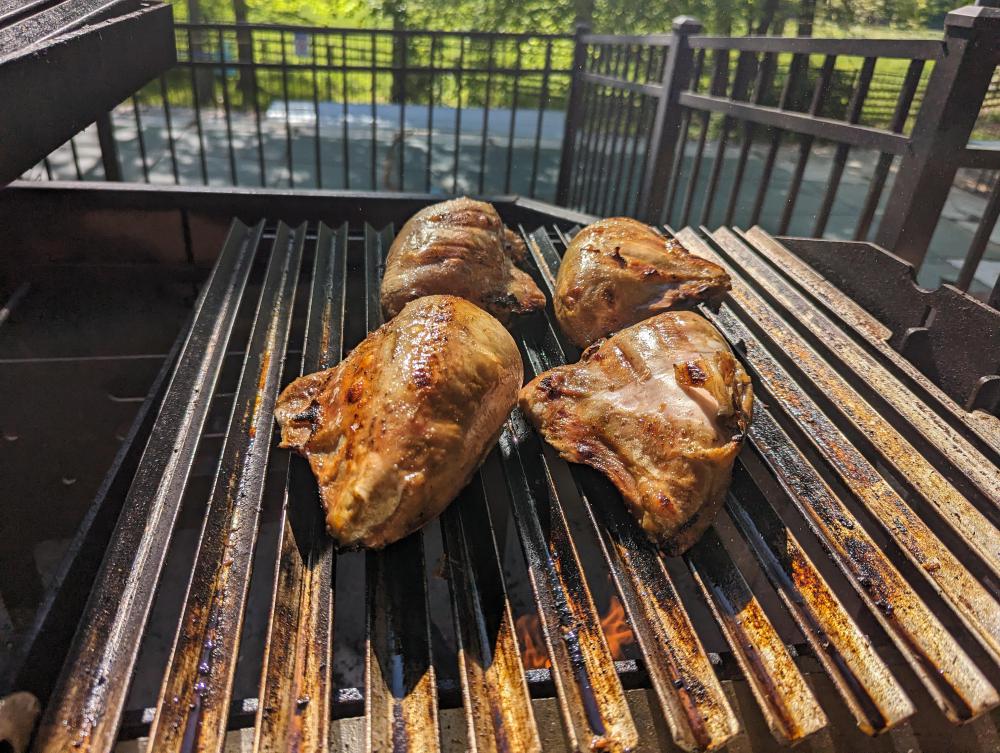
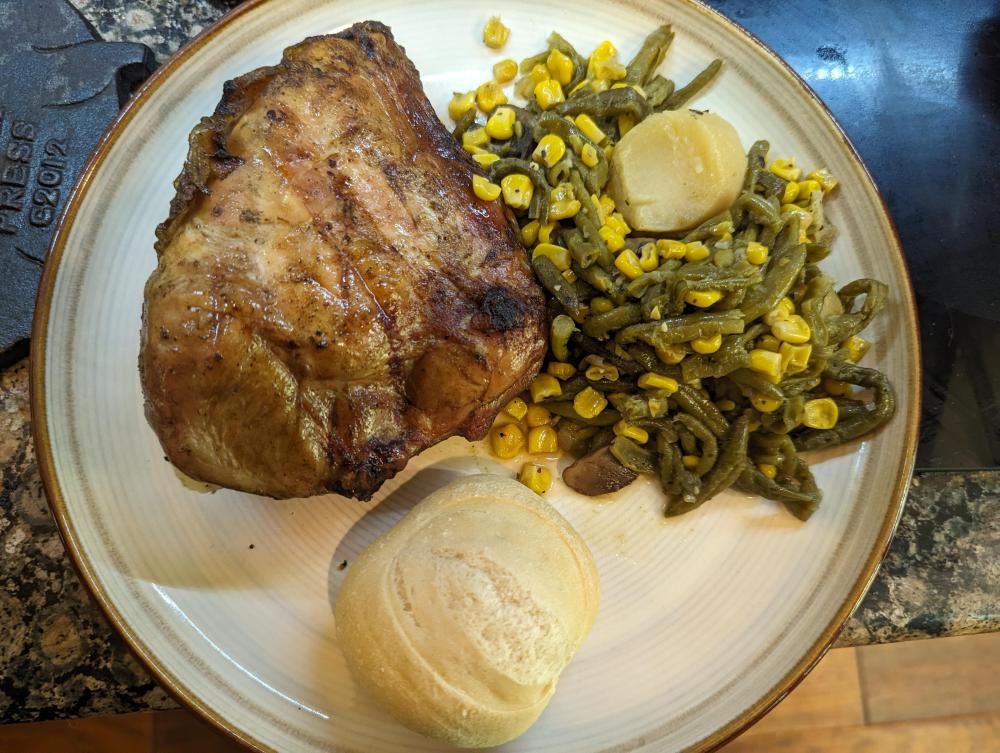


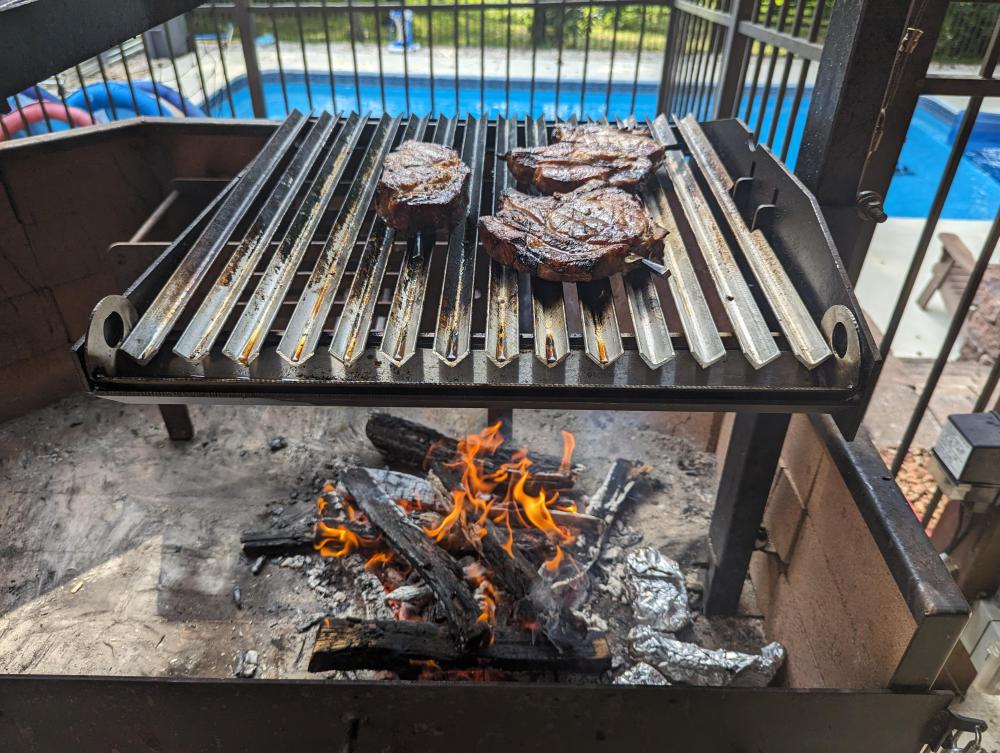
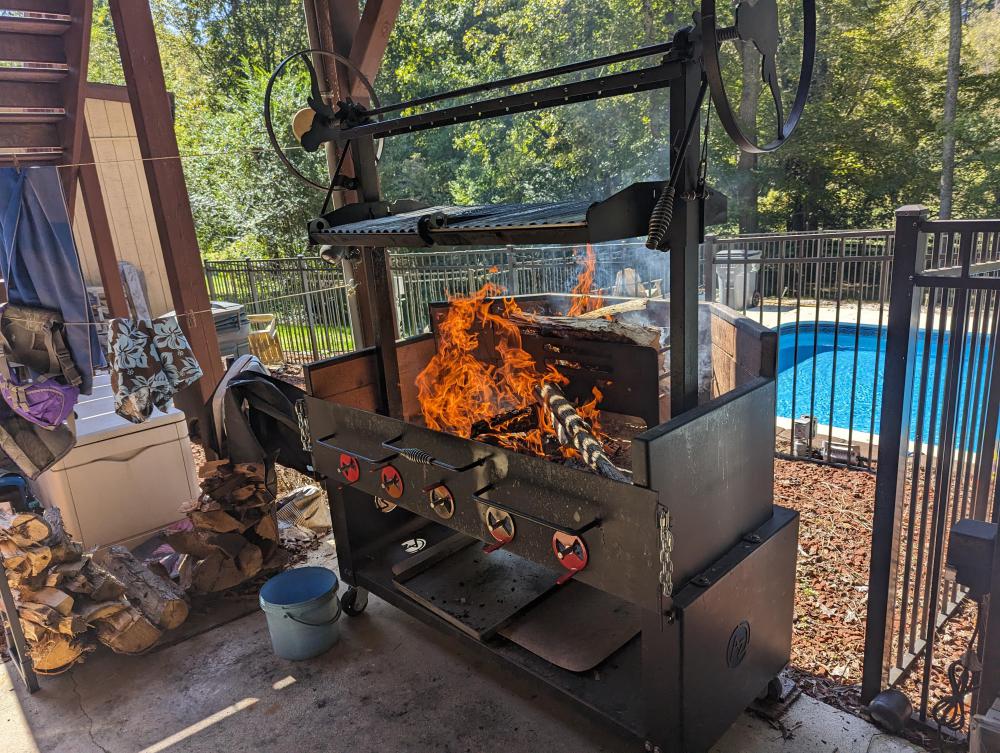
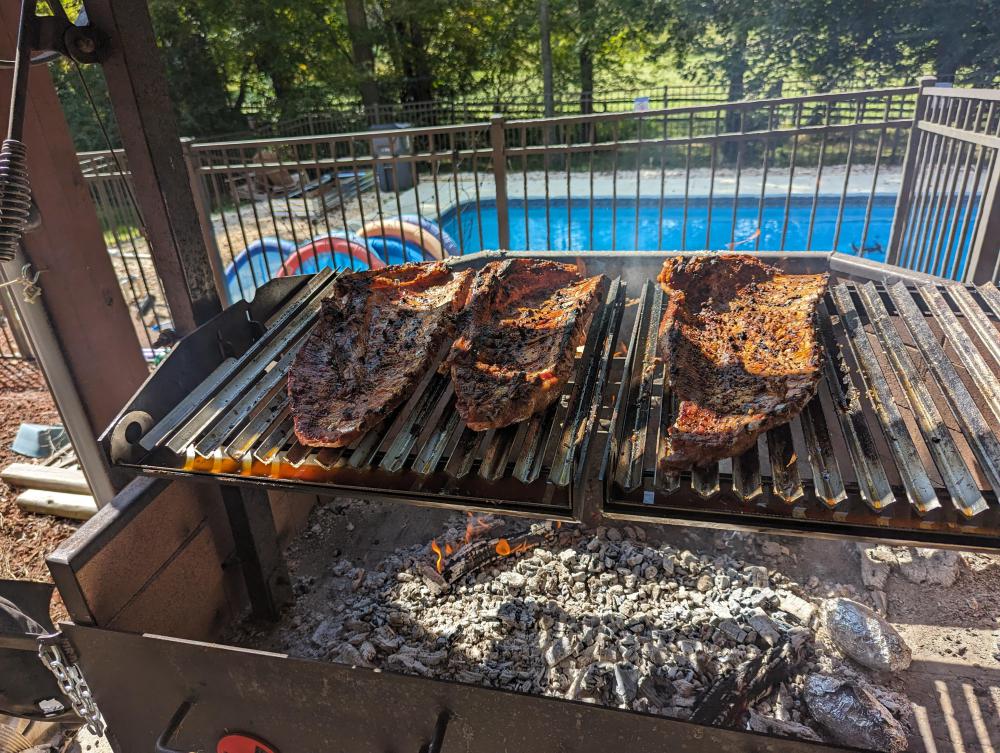
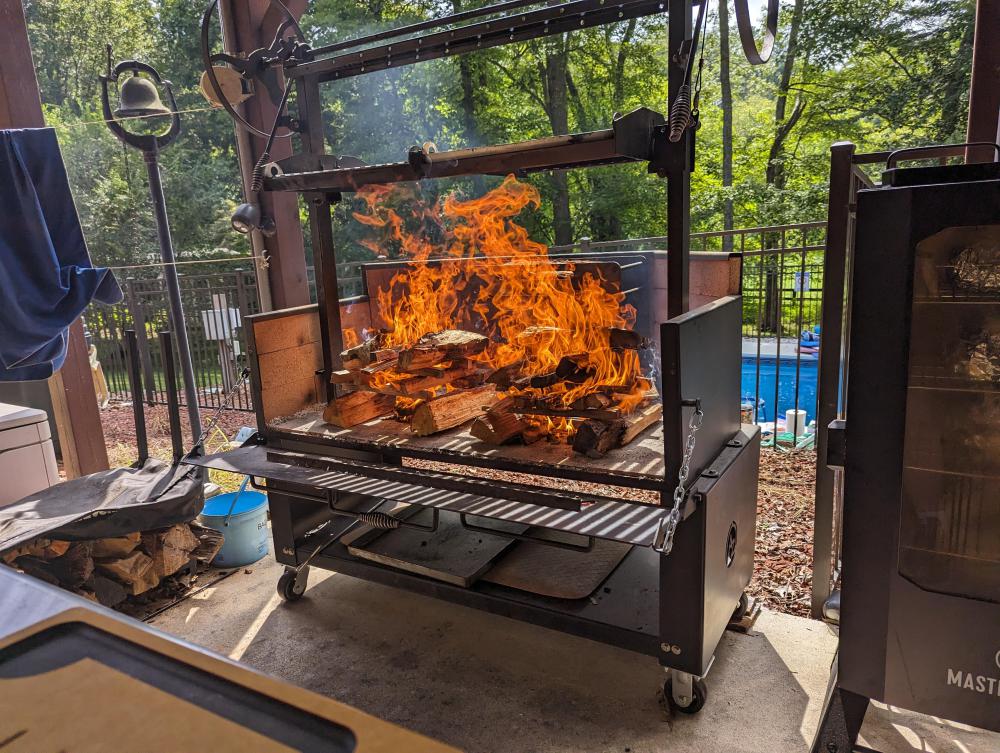
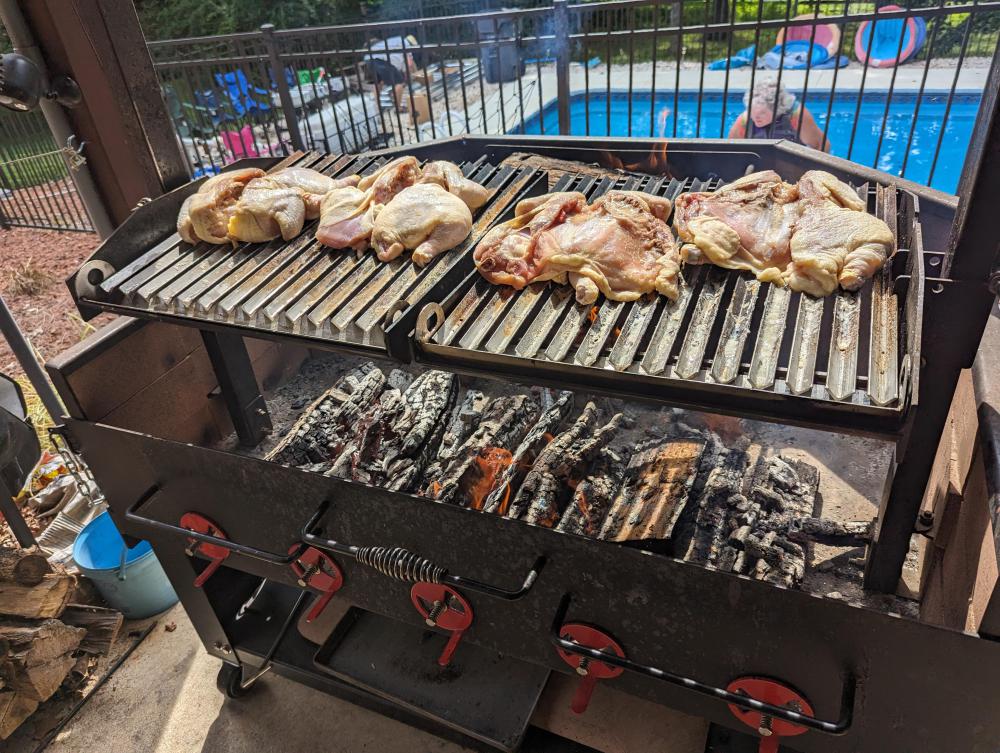
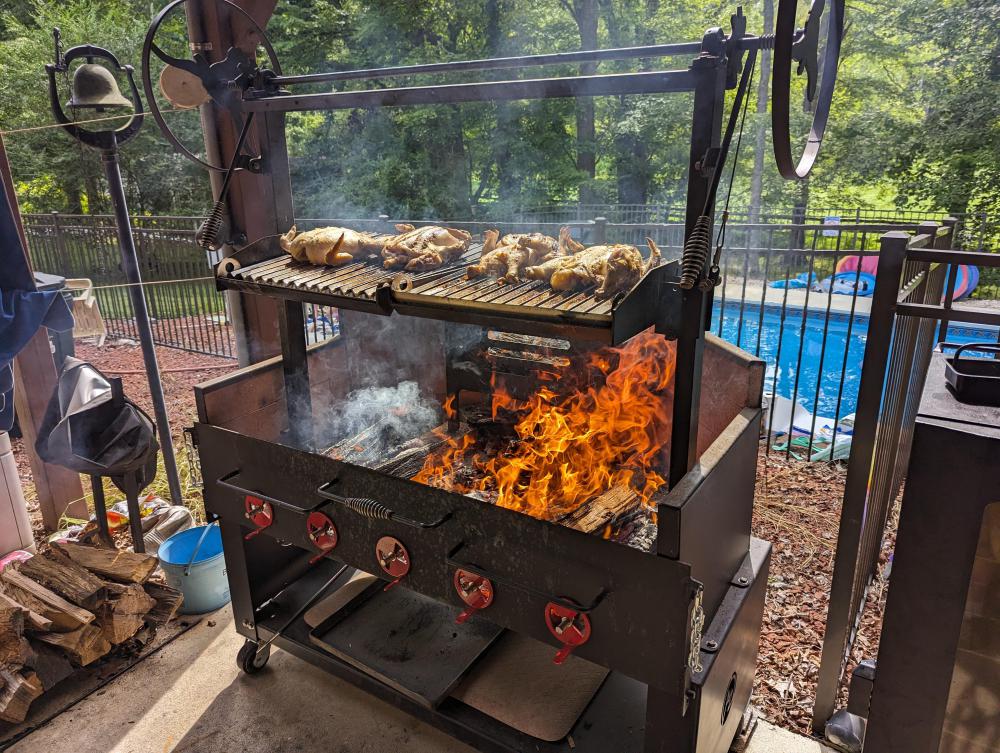
.thumb.jpg.06a511af4fd05a48ce196b8d81dabdf2.jpg)
.thumb.jpg.931daad7e3df4412cbcaec1a1651a9e9.jpg)
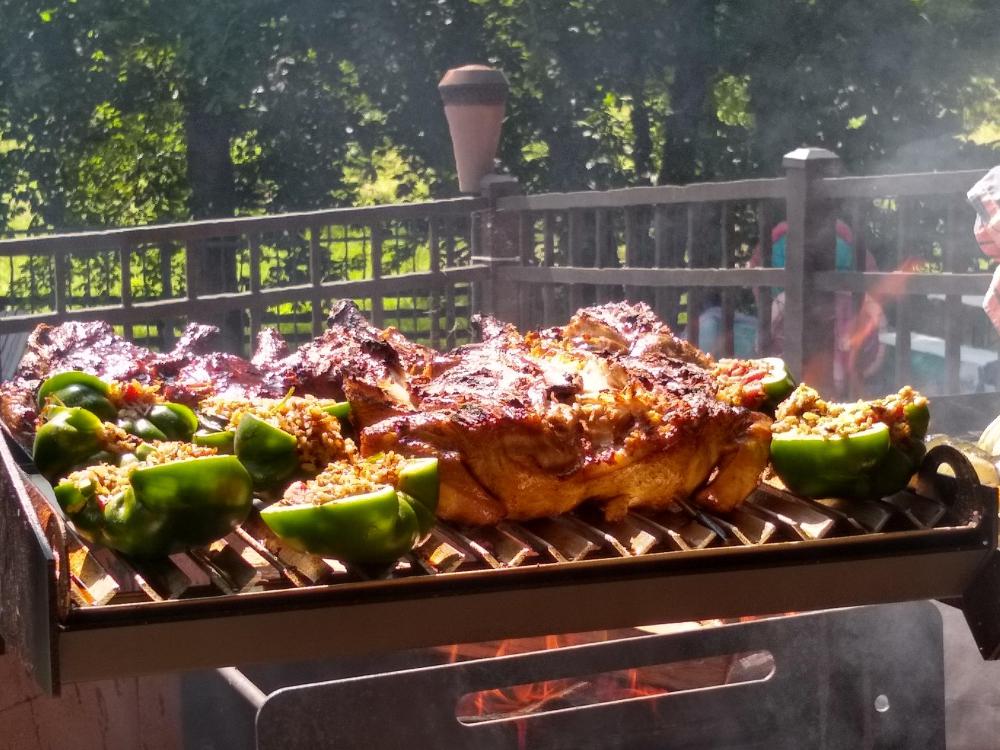
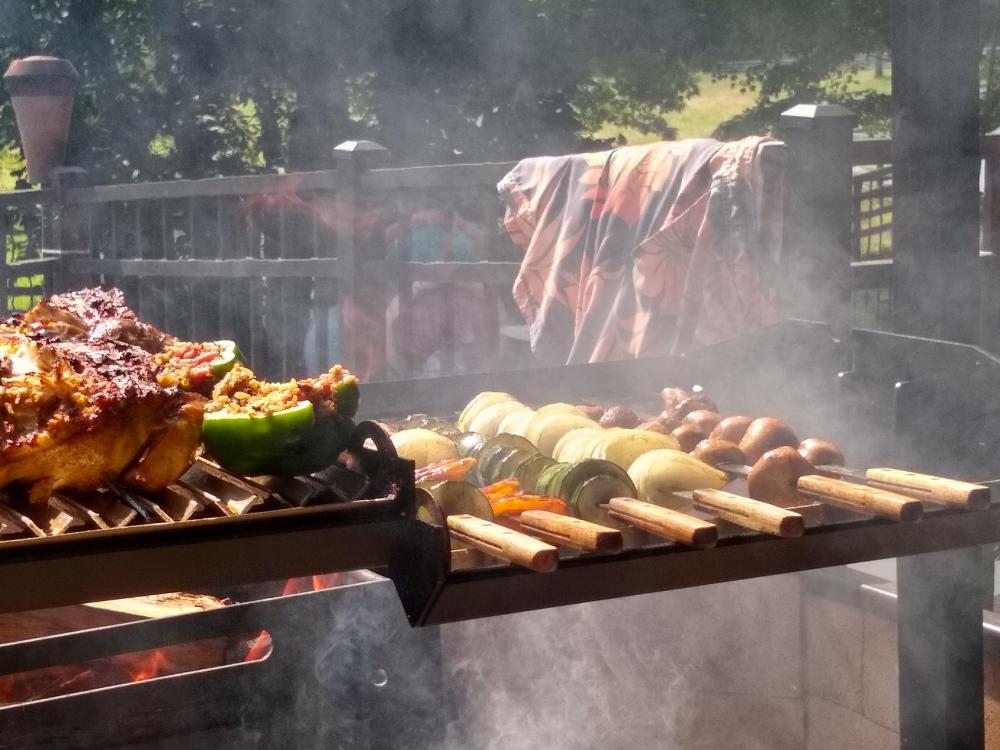
.thumb.jpg.5bc94298ad6254013119903321ddfe44.jpg)
